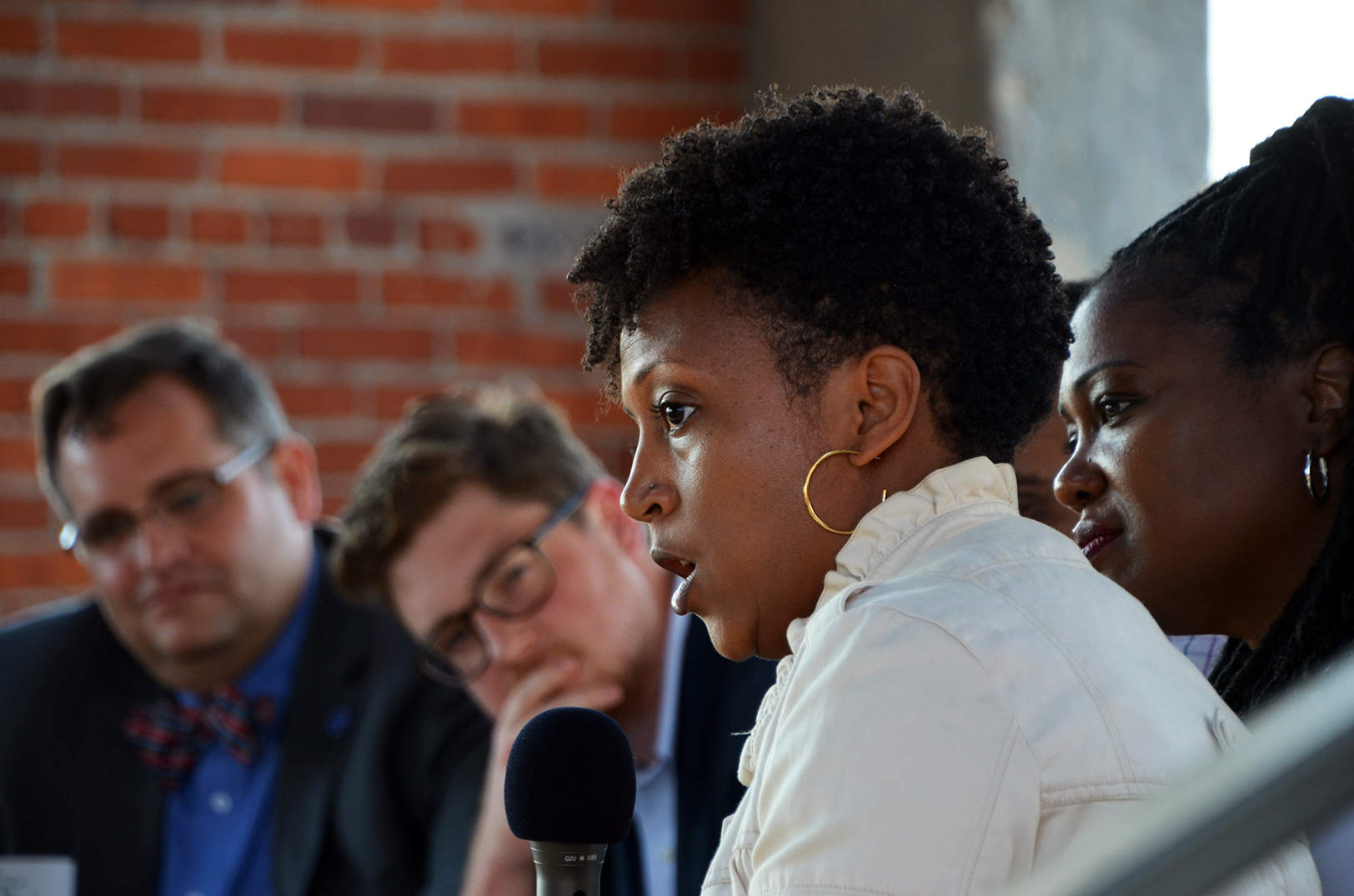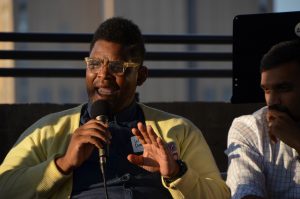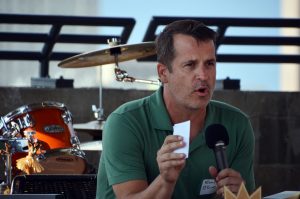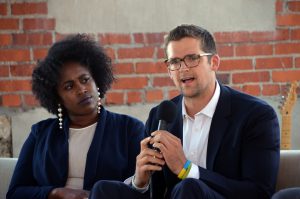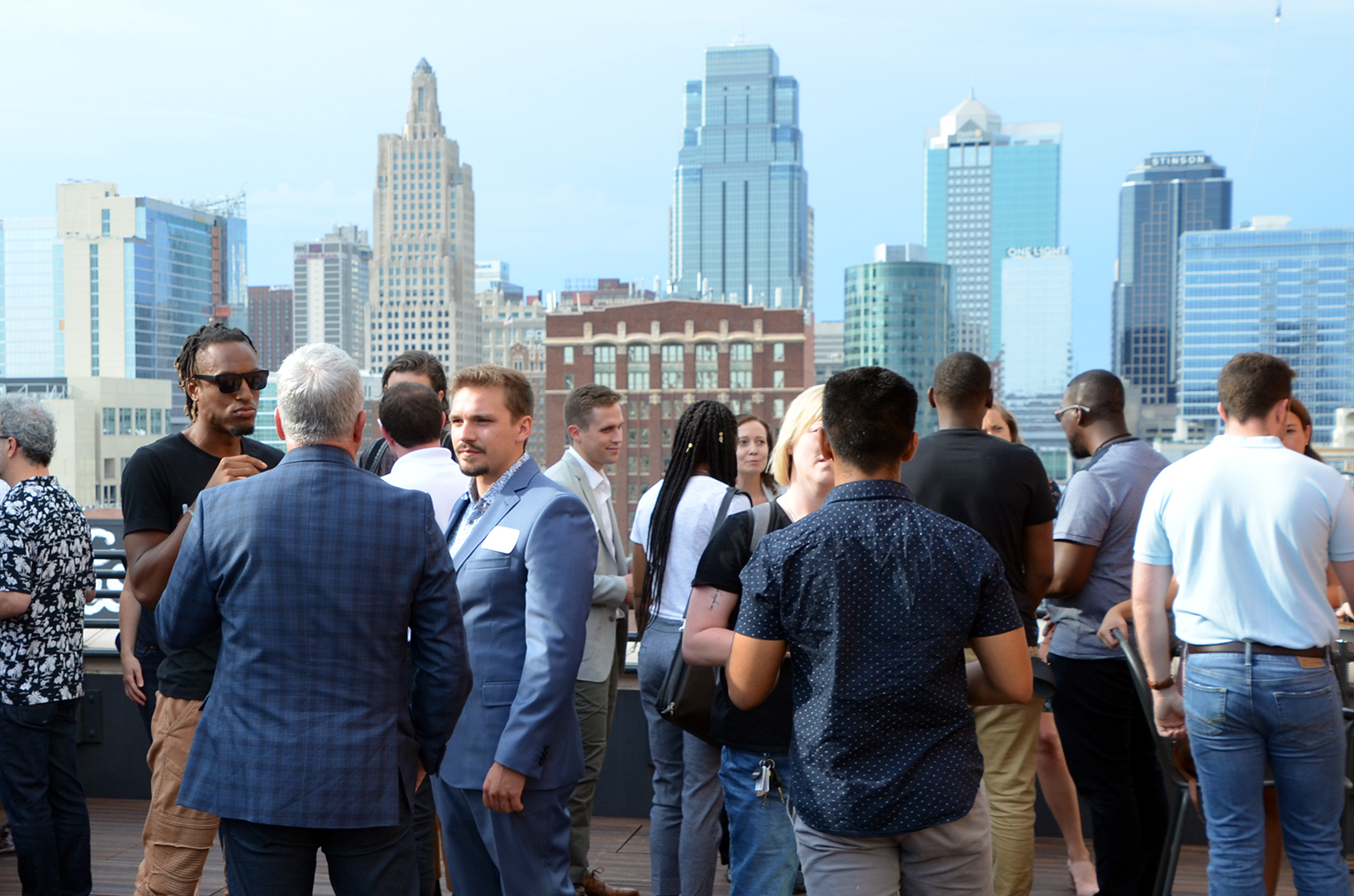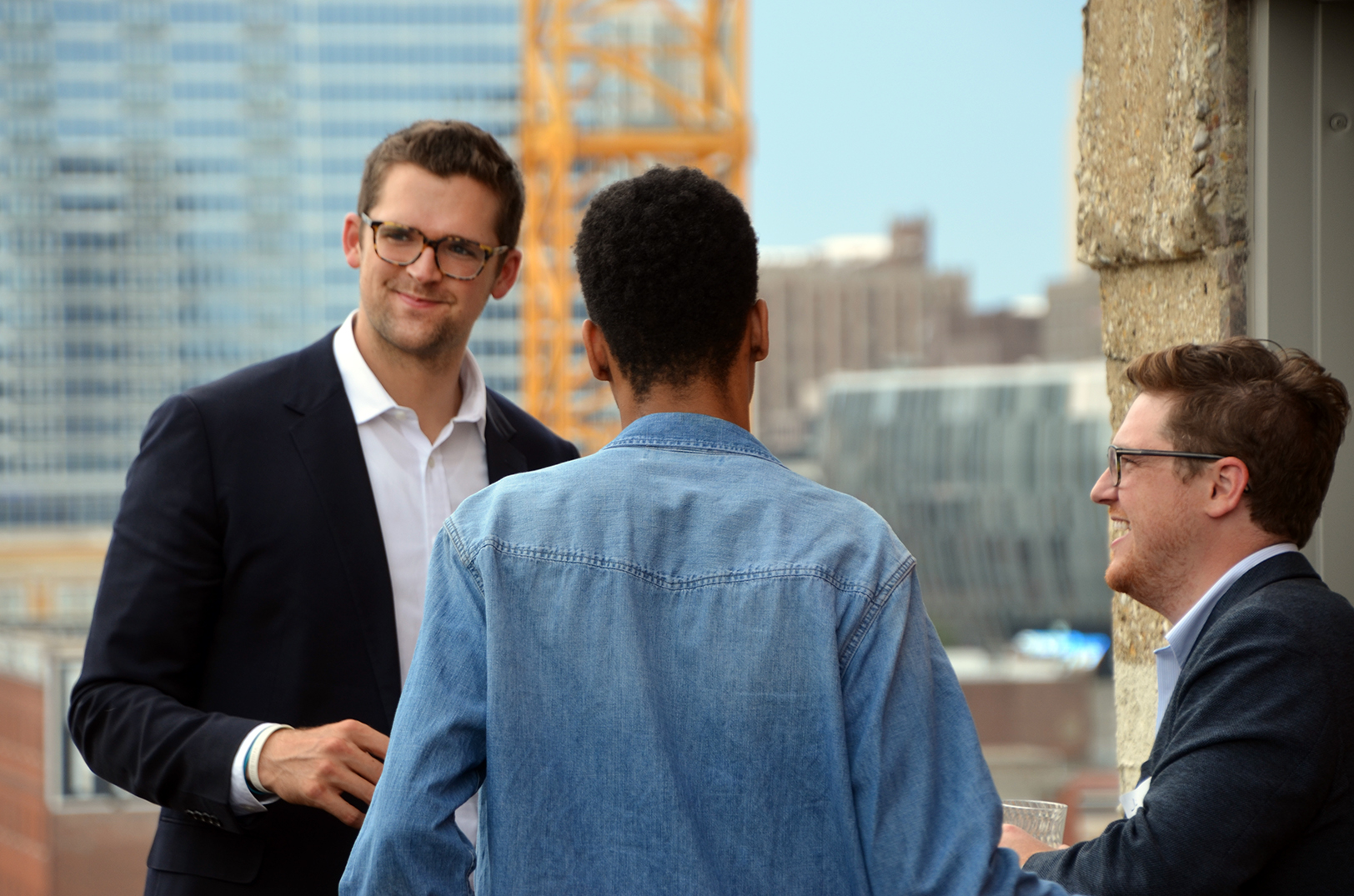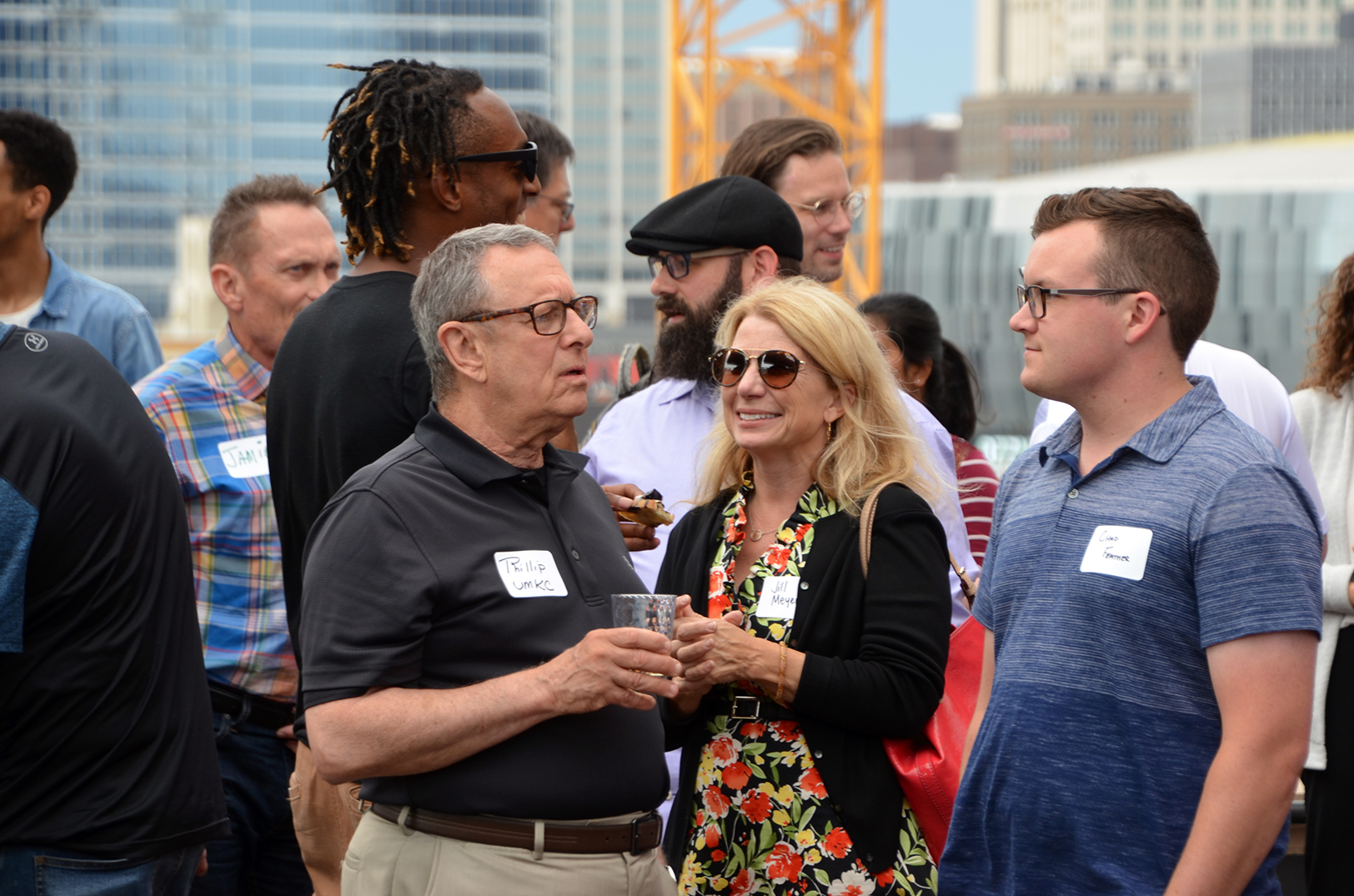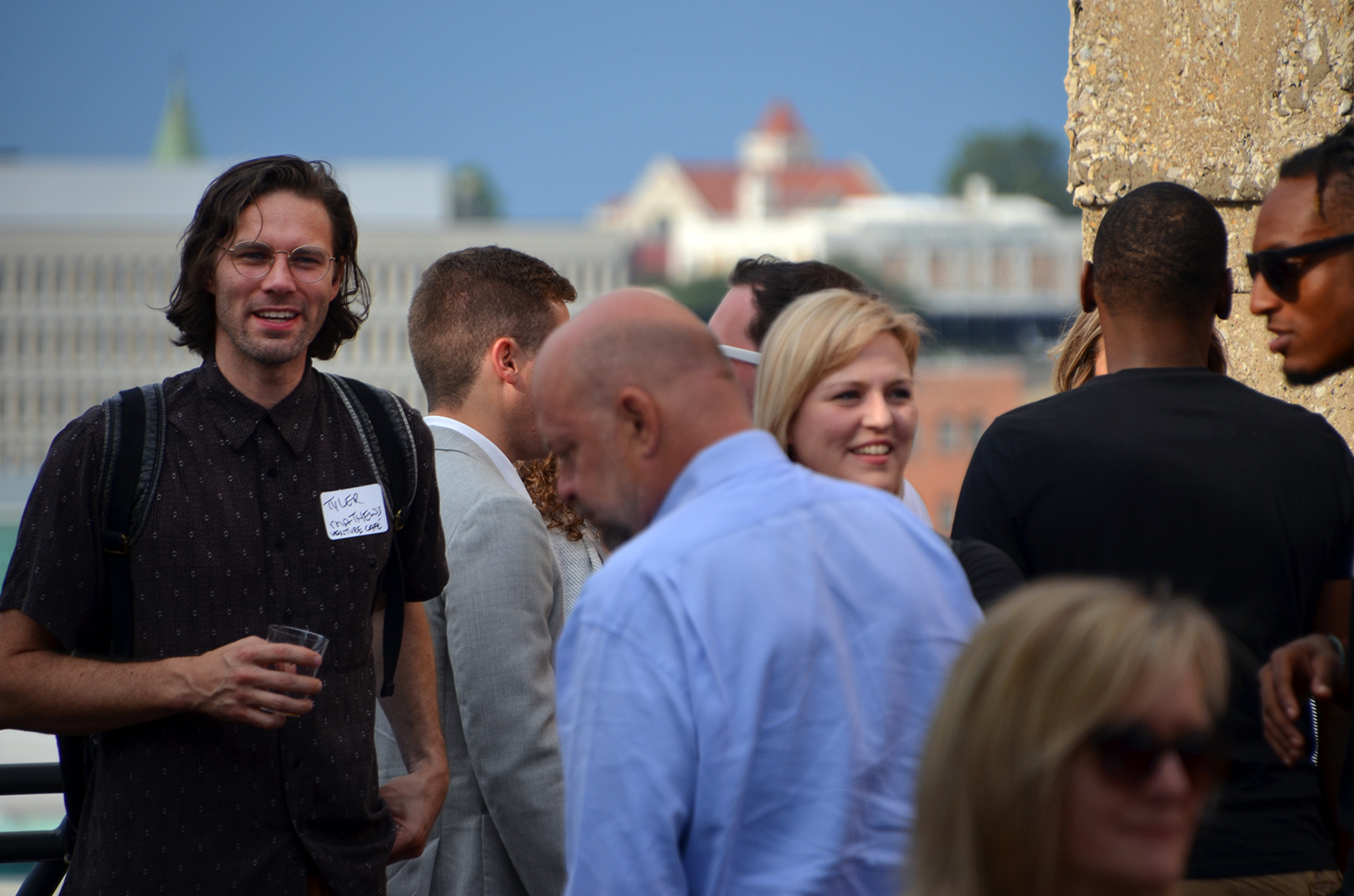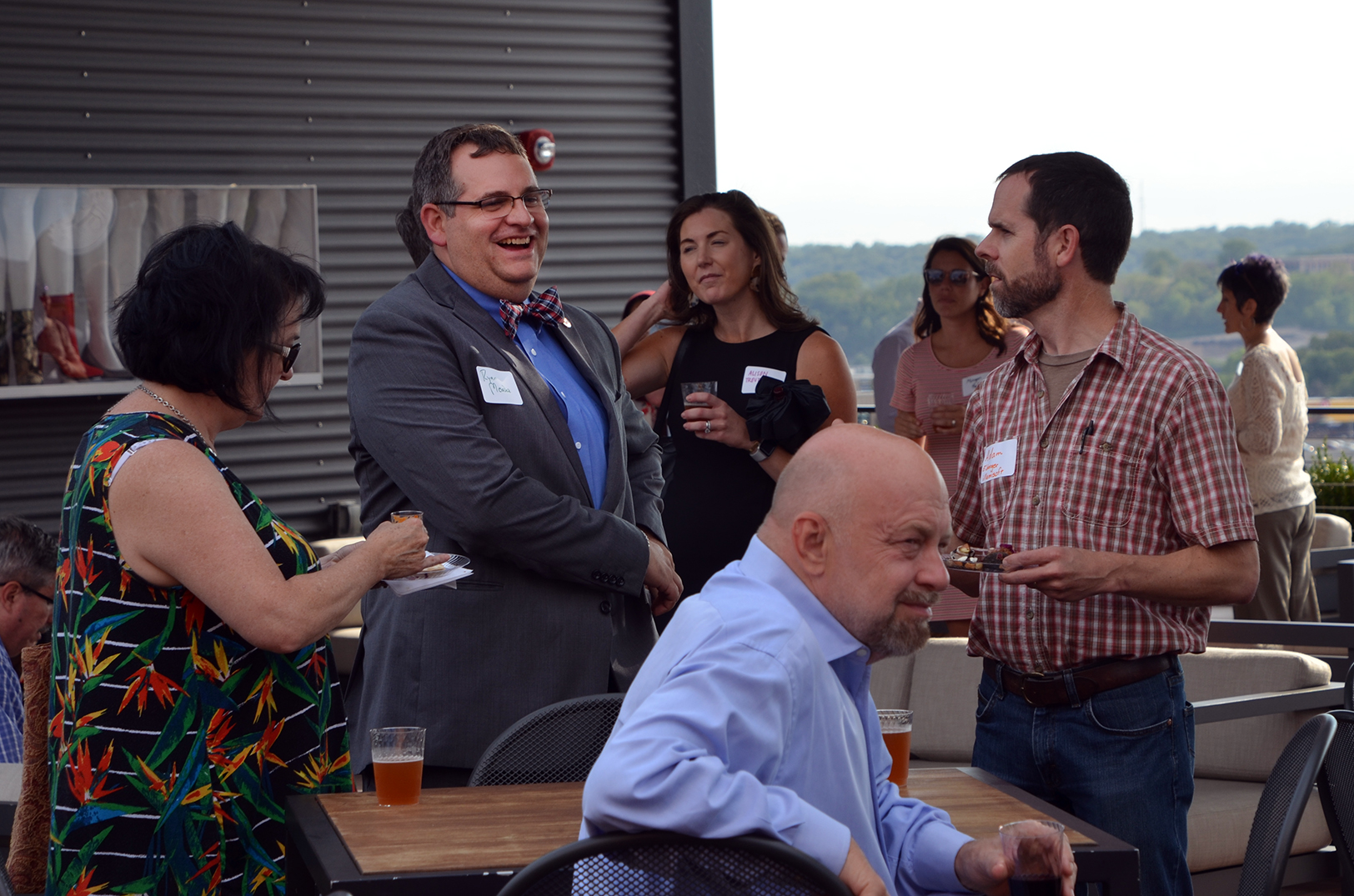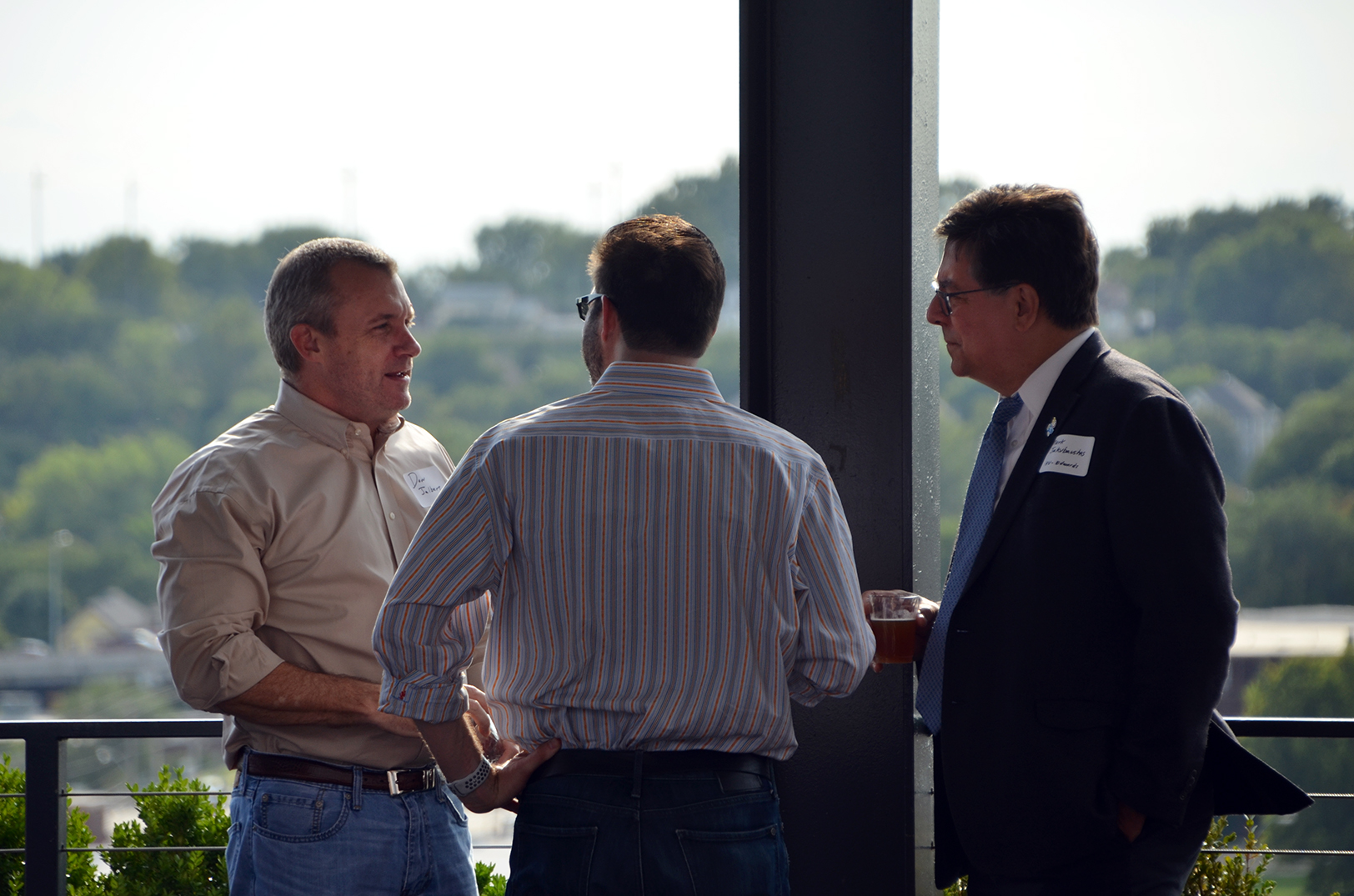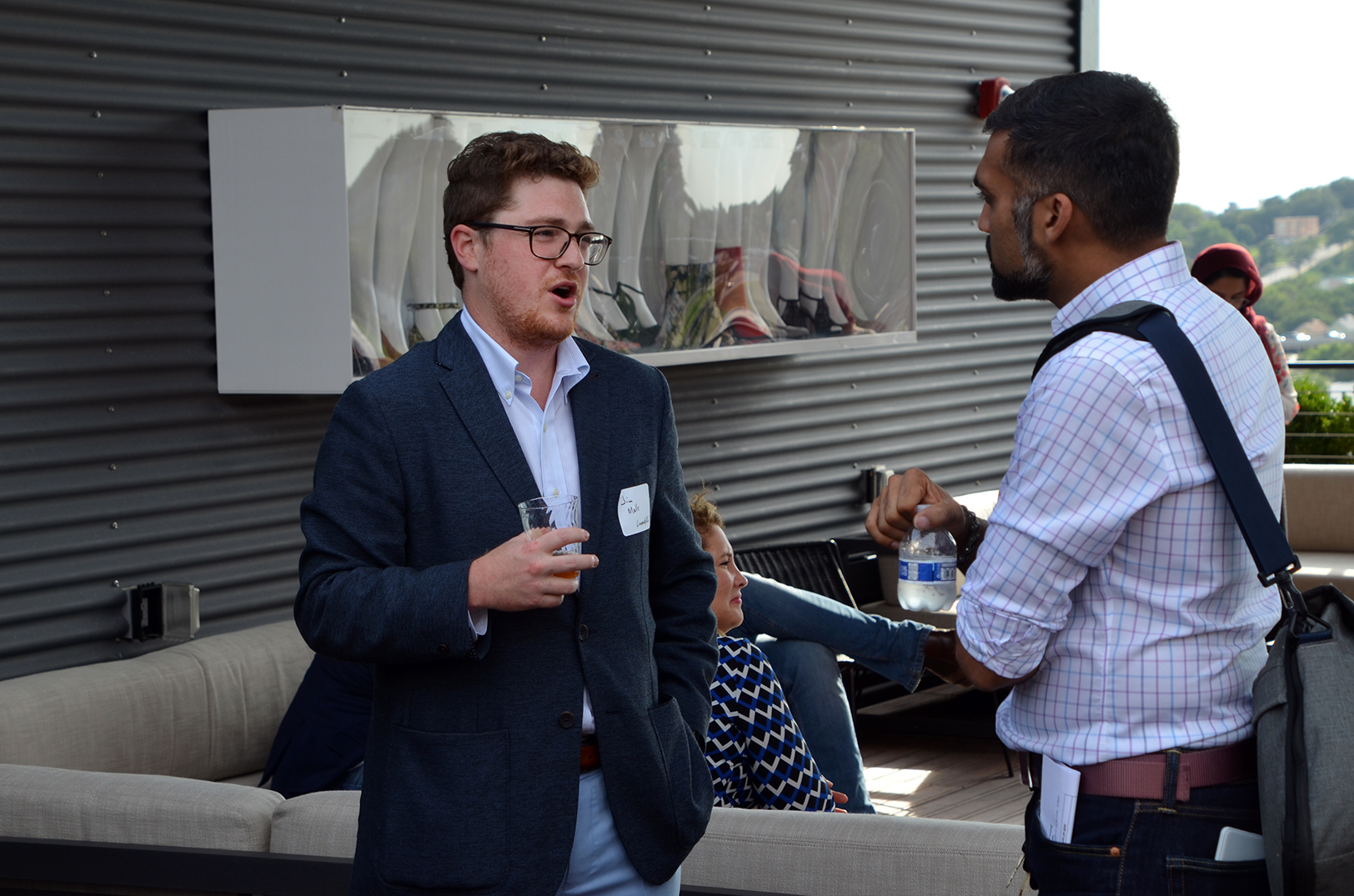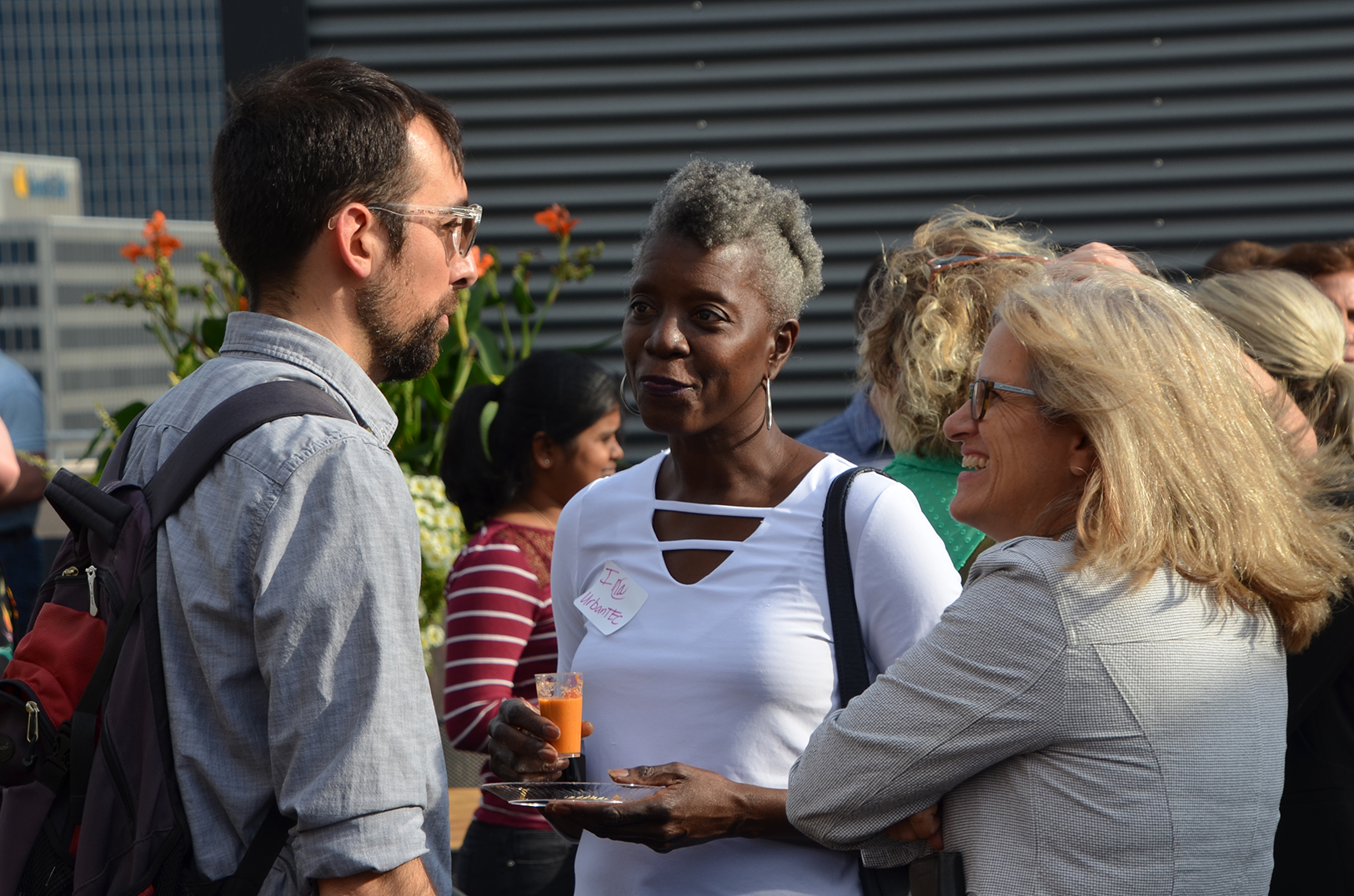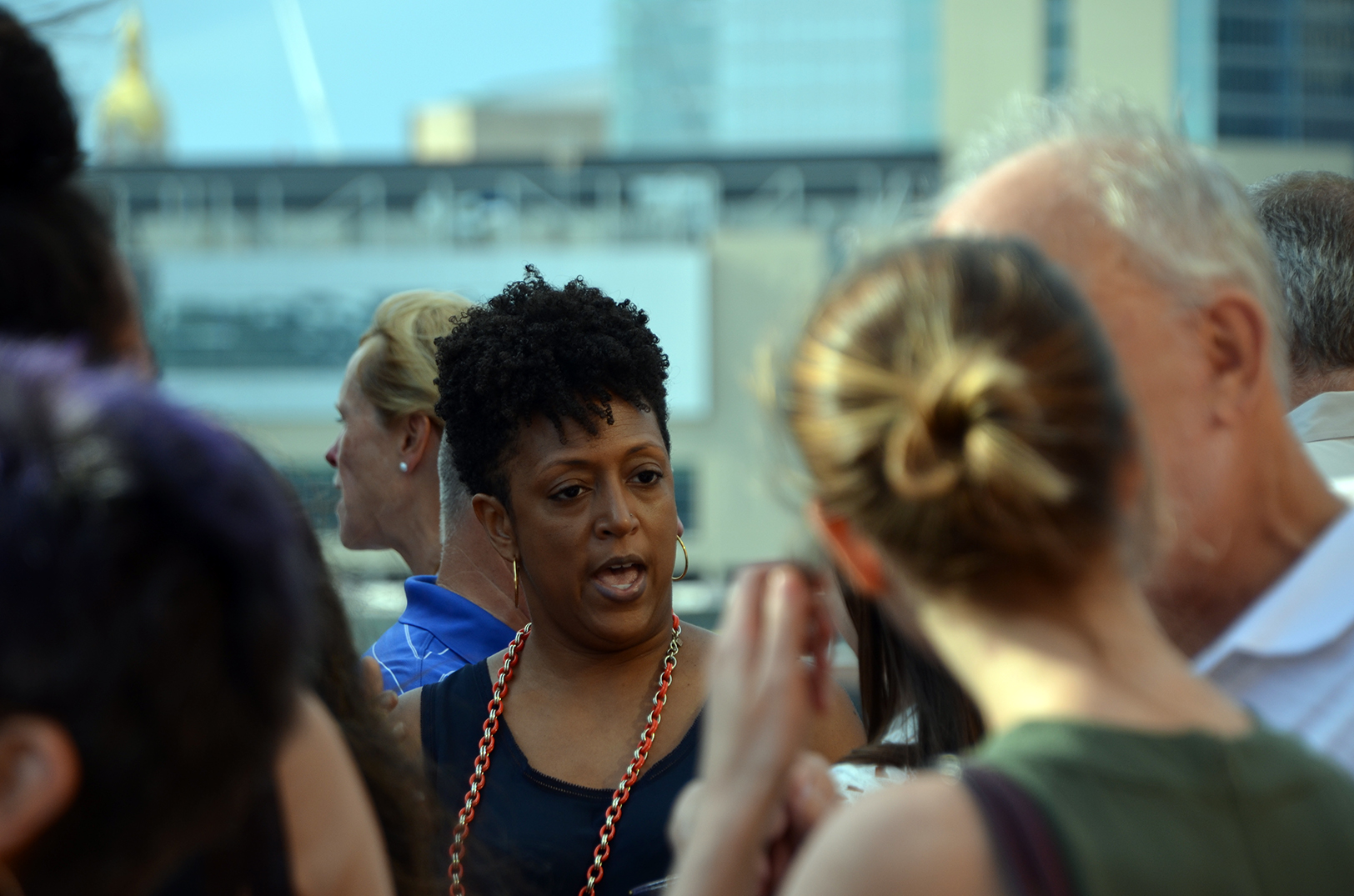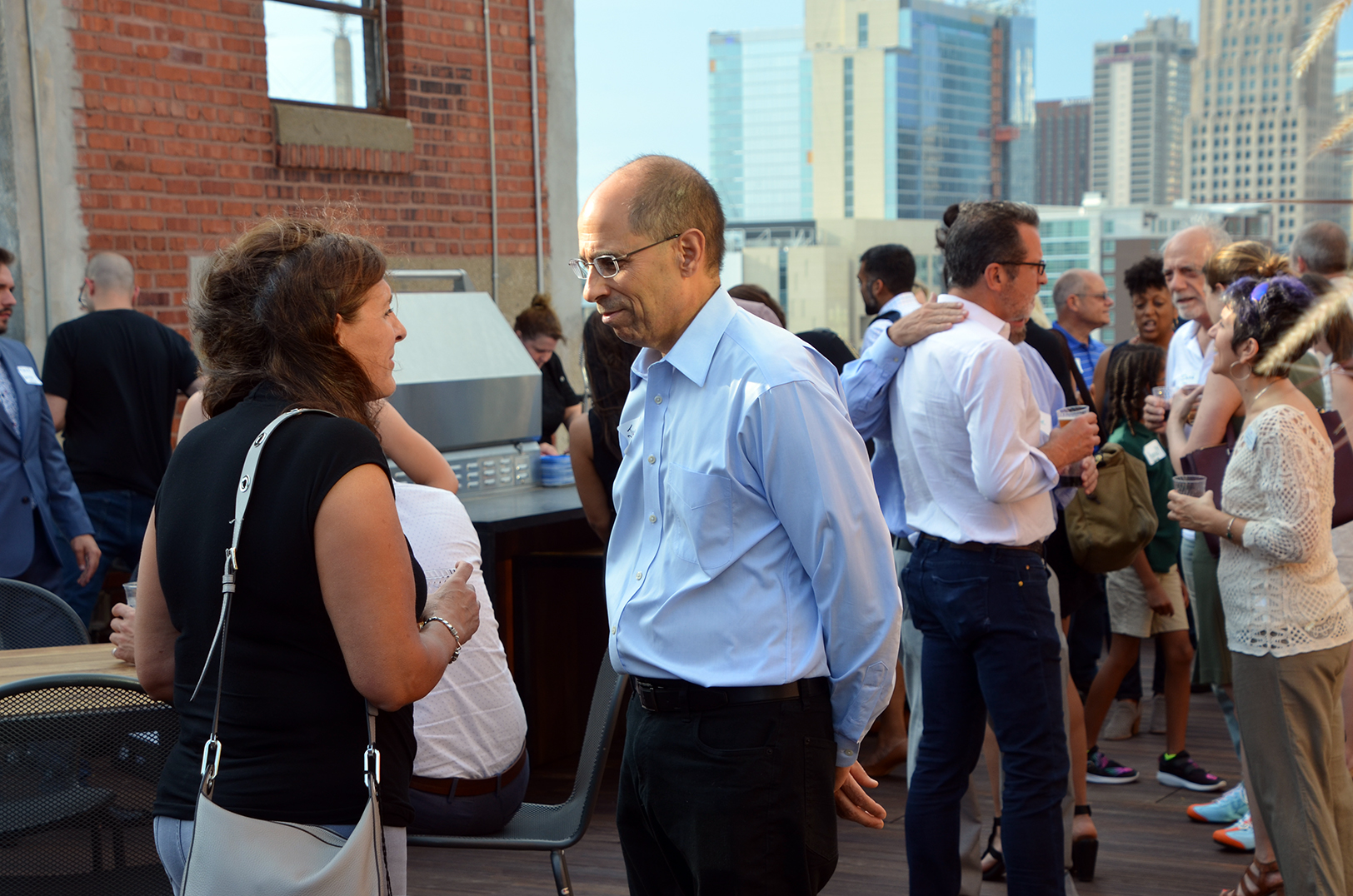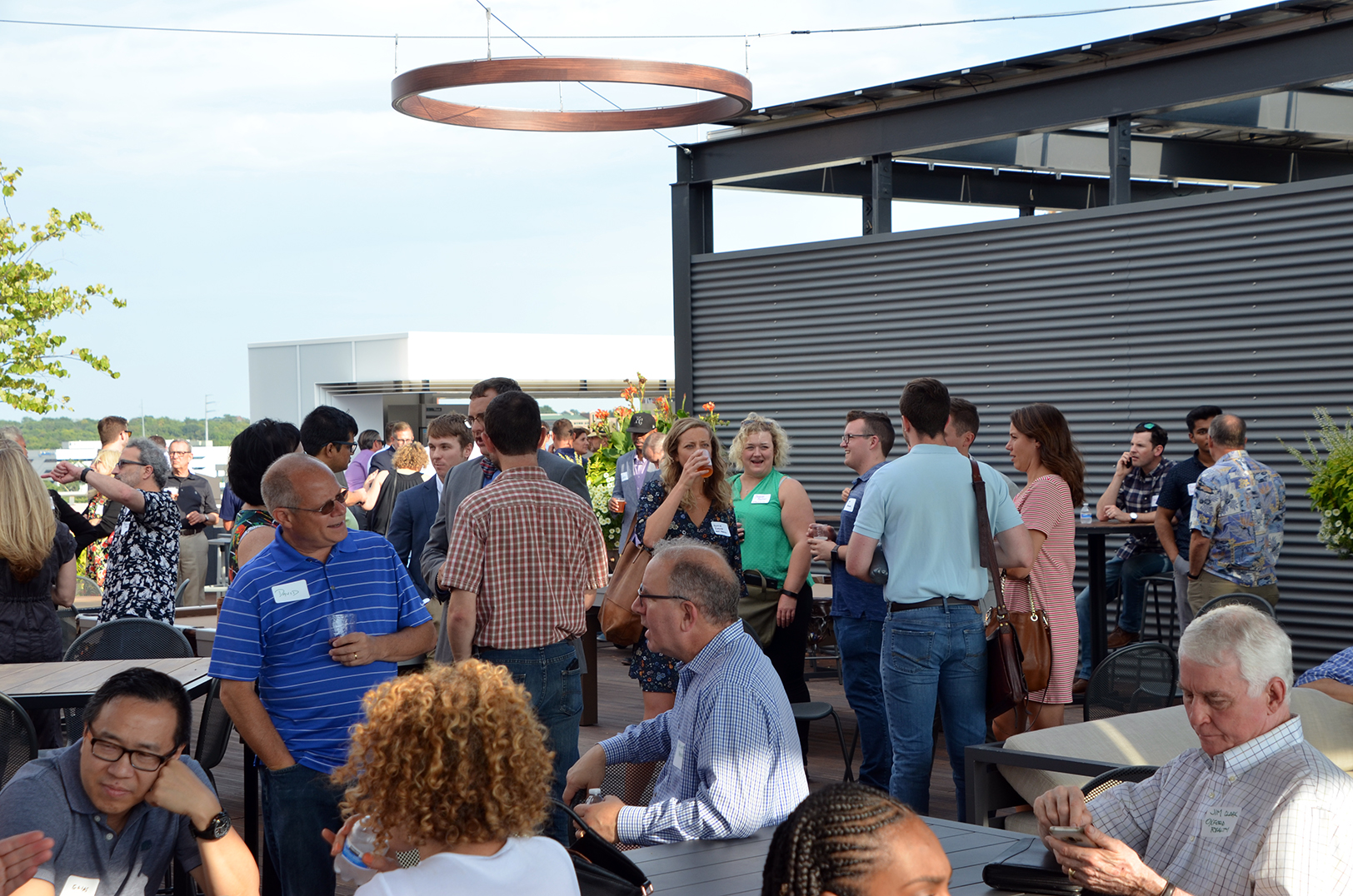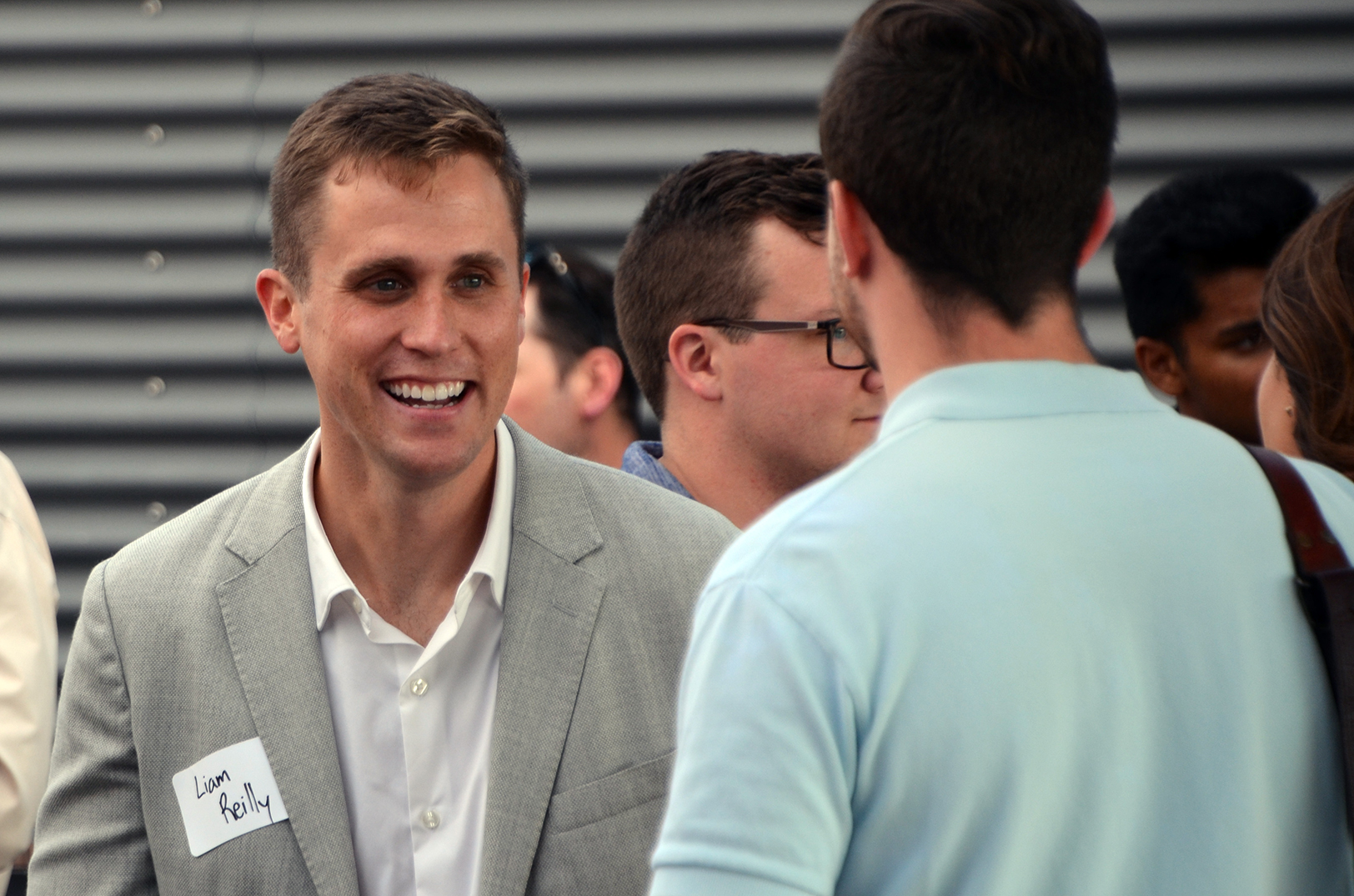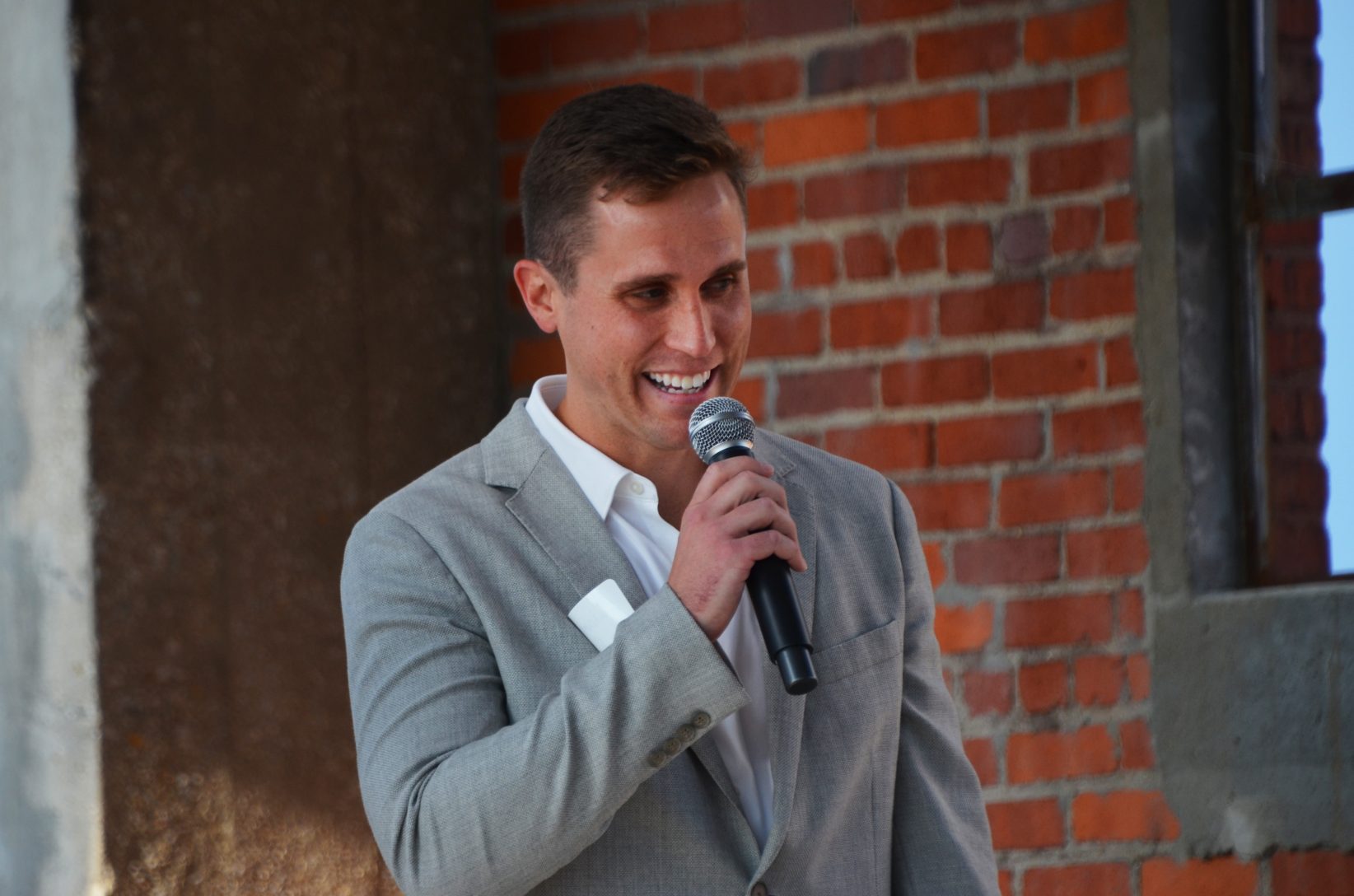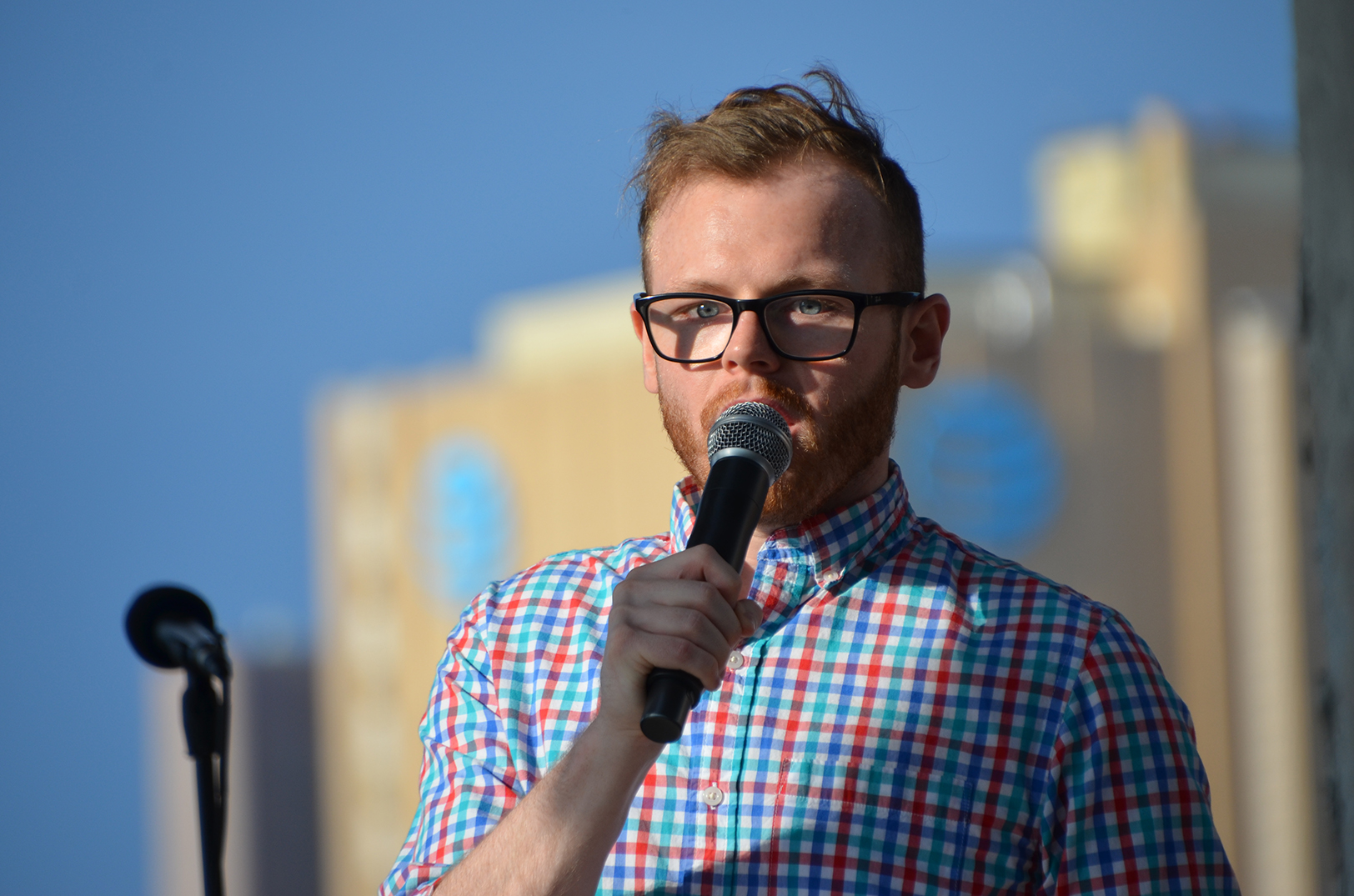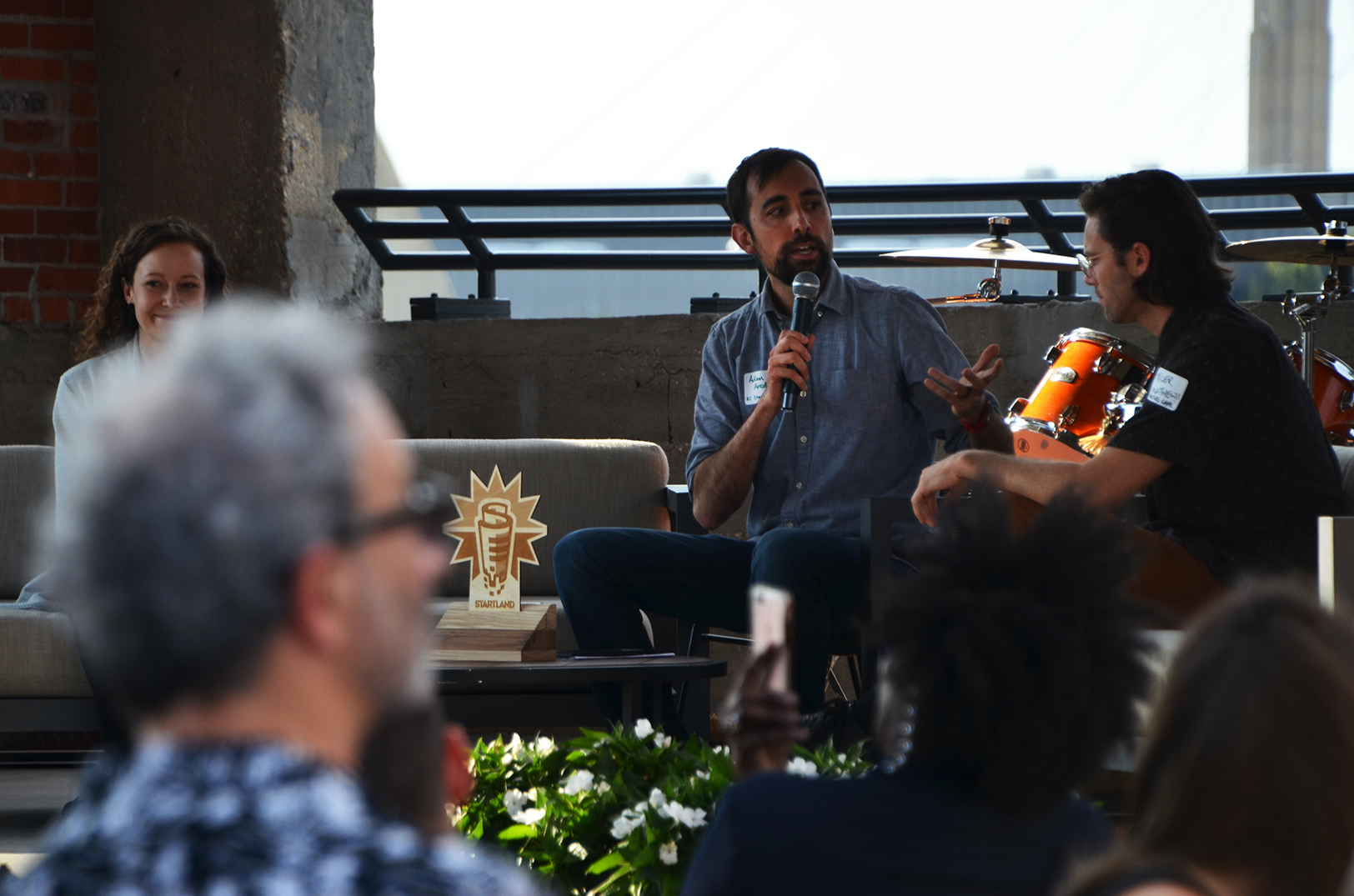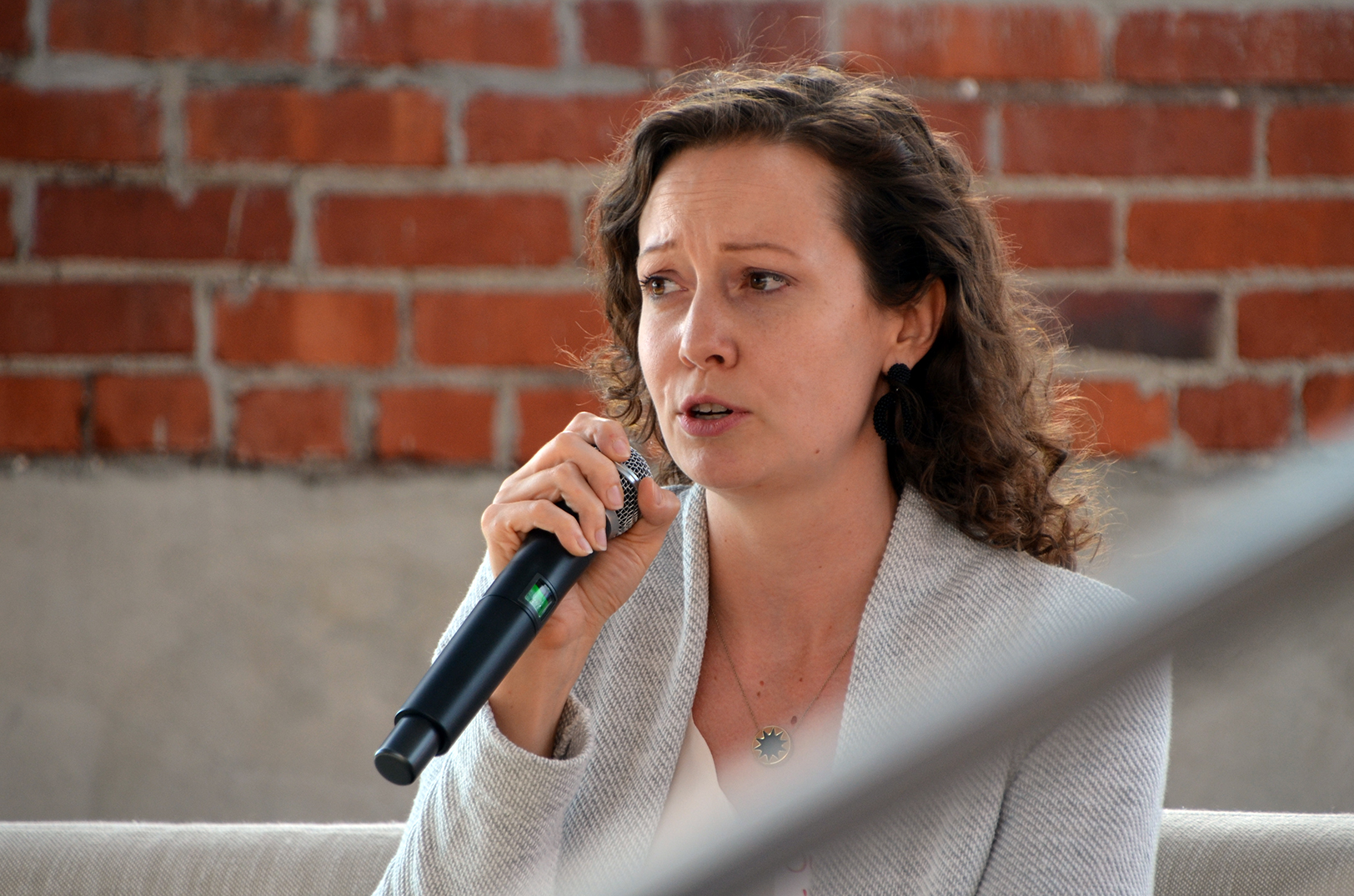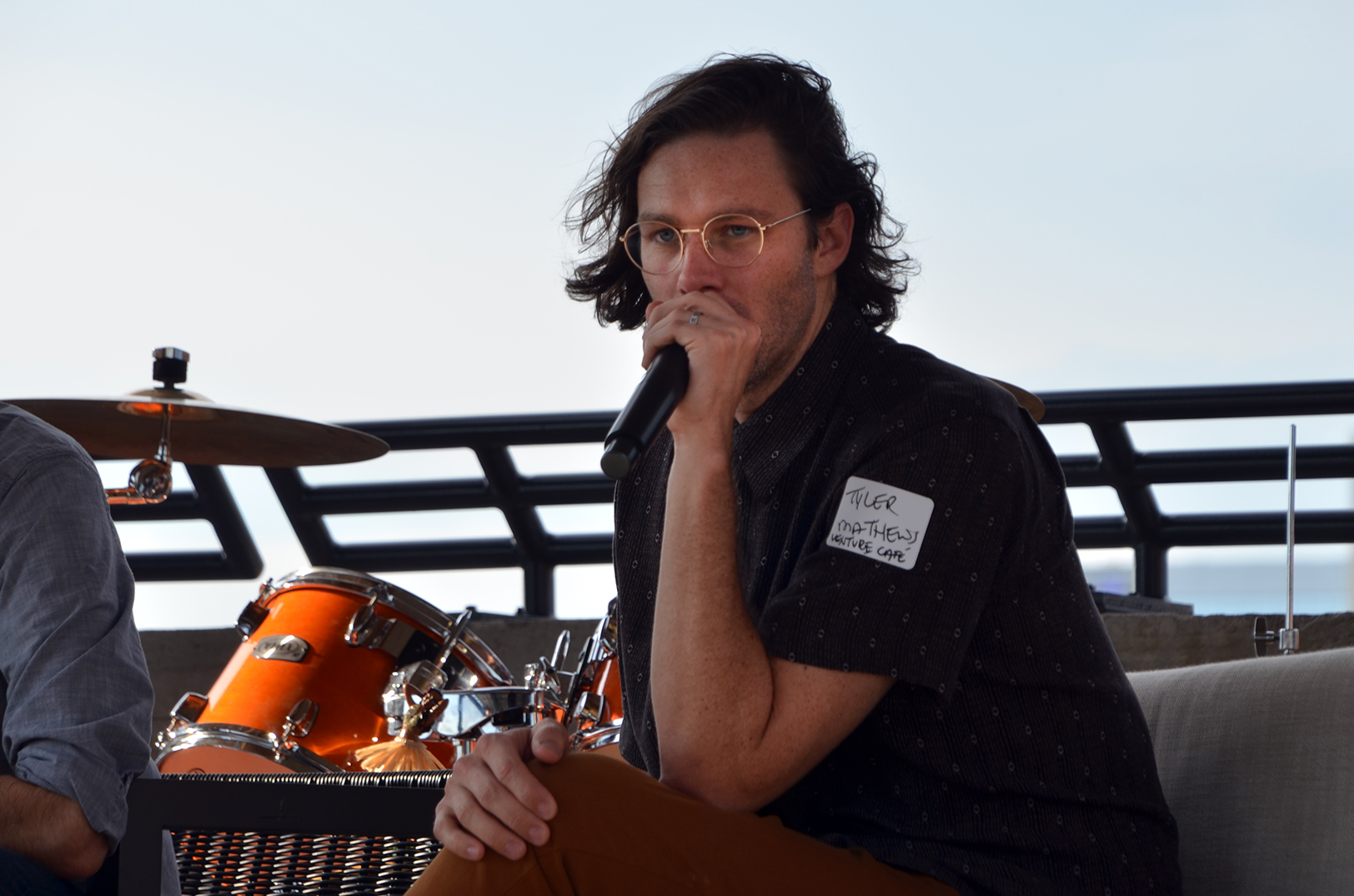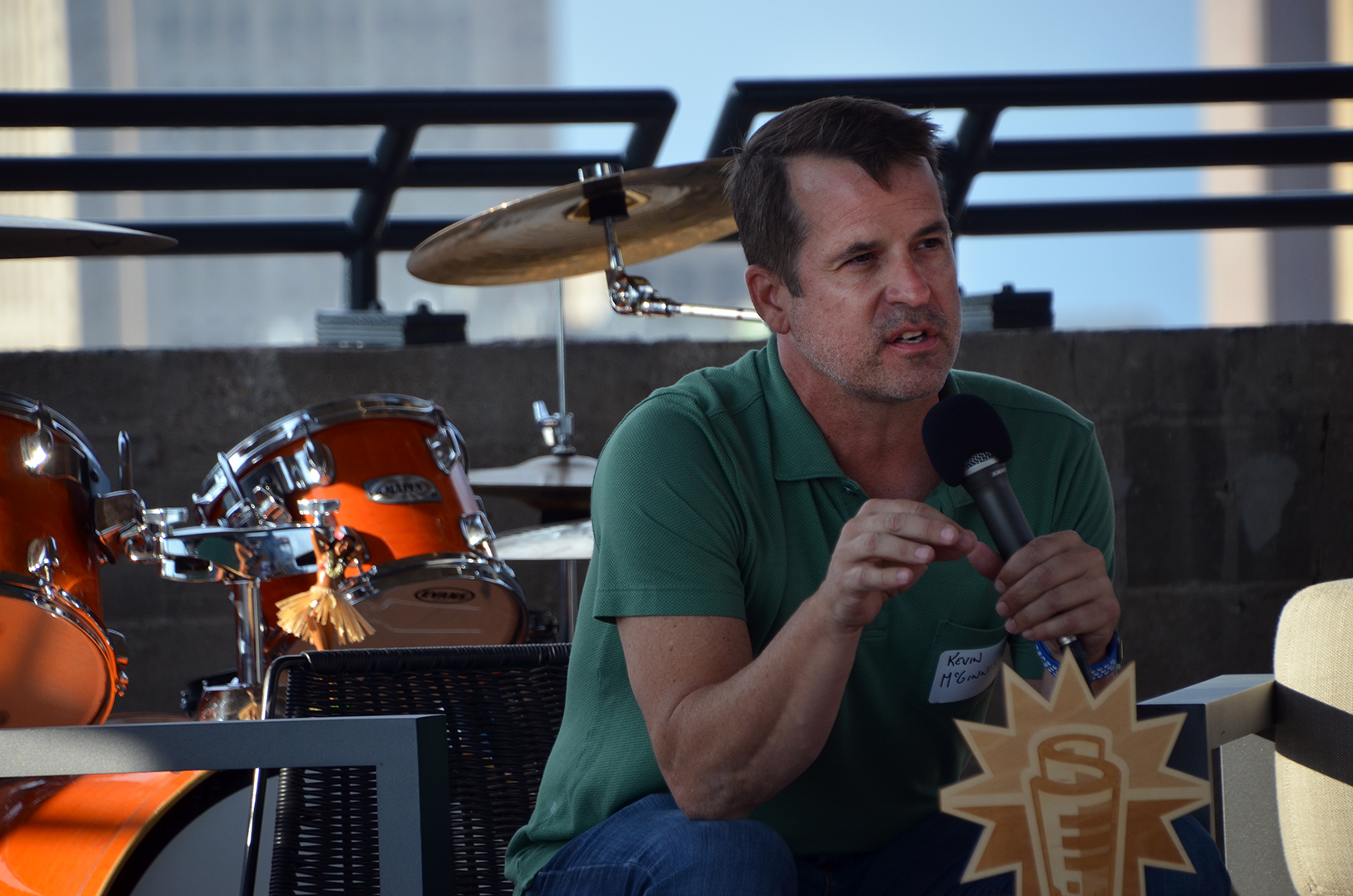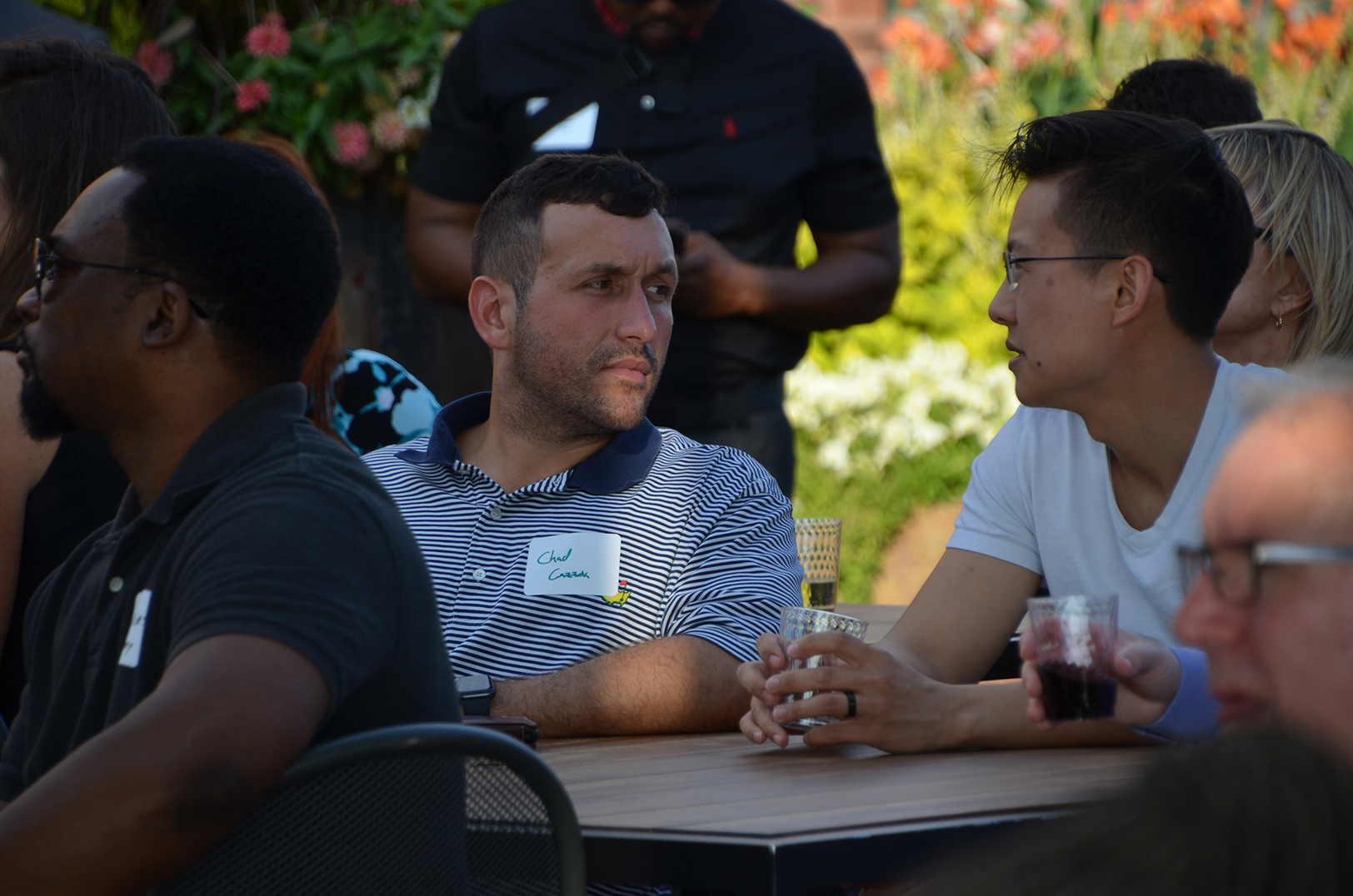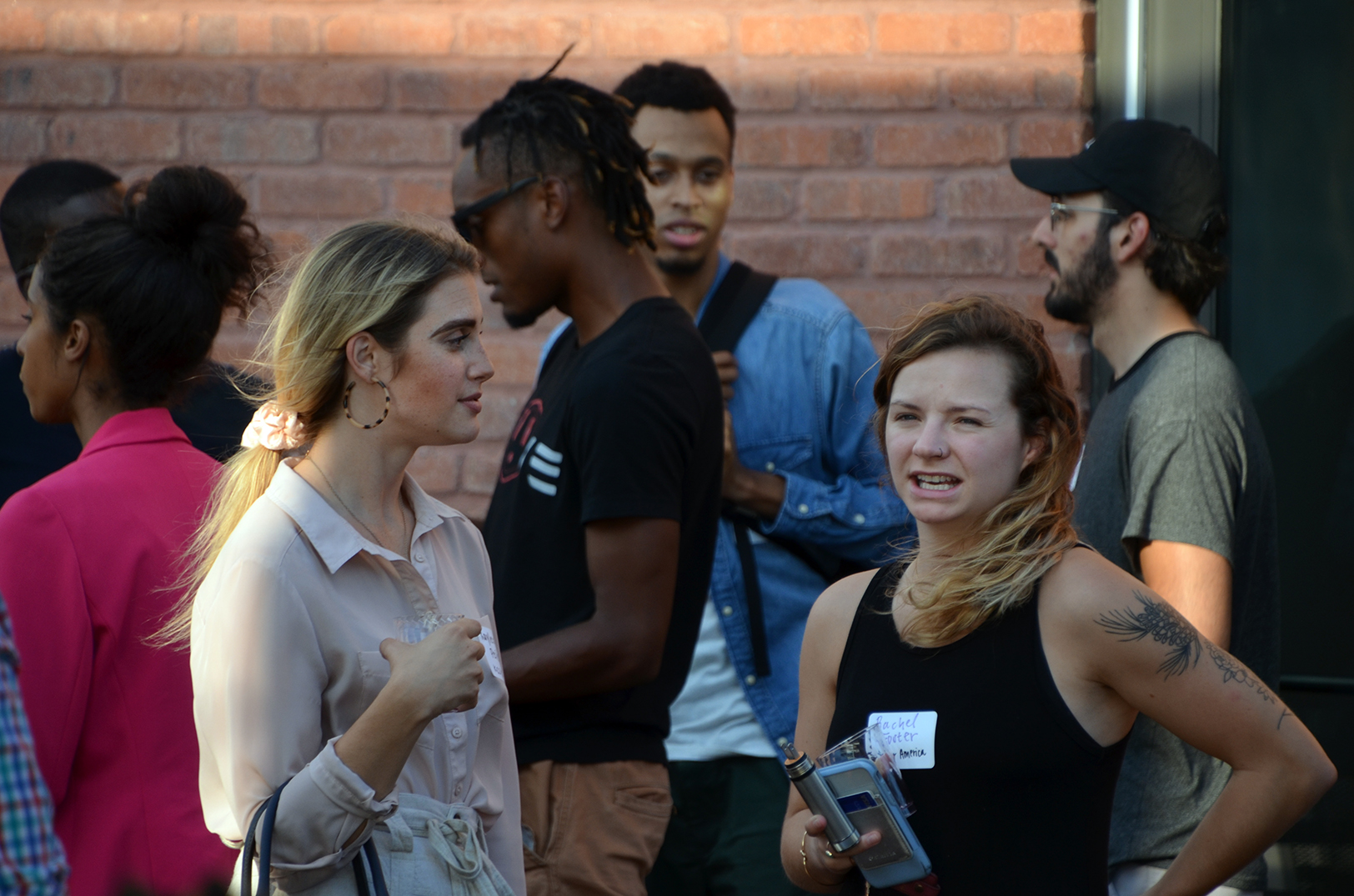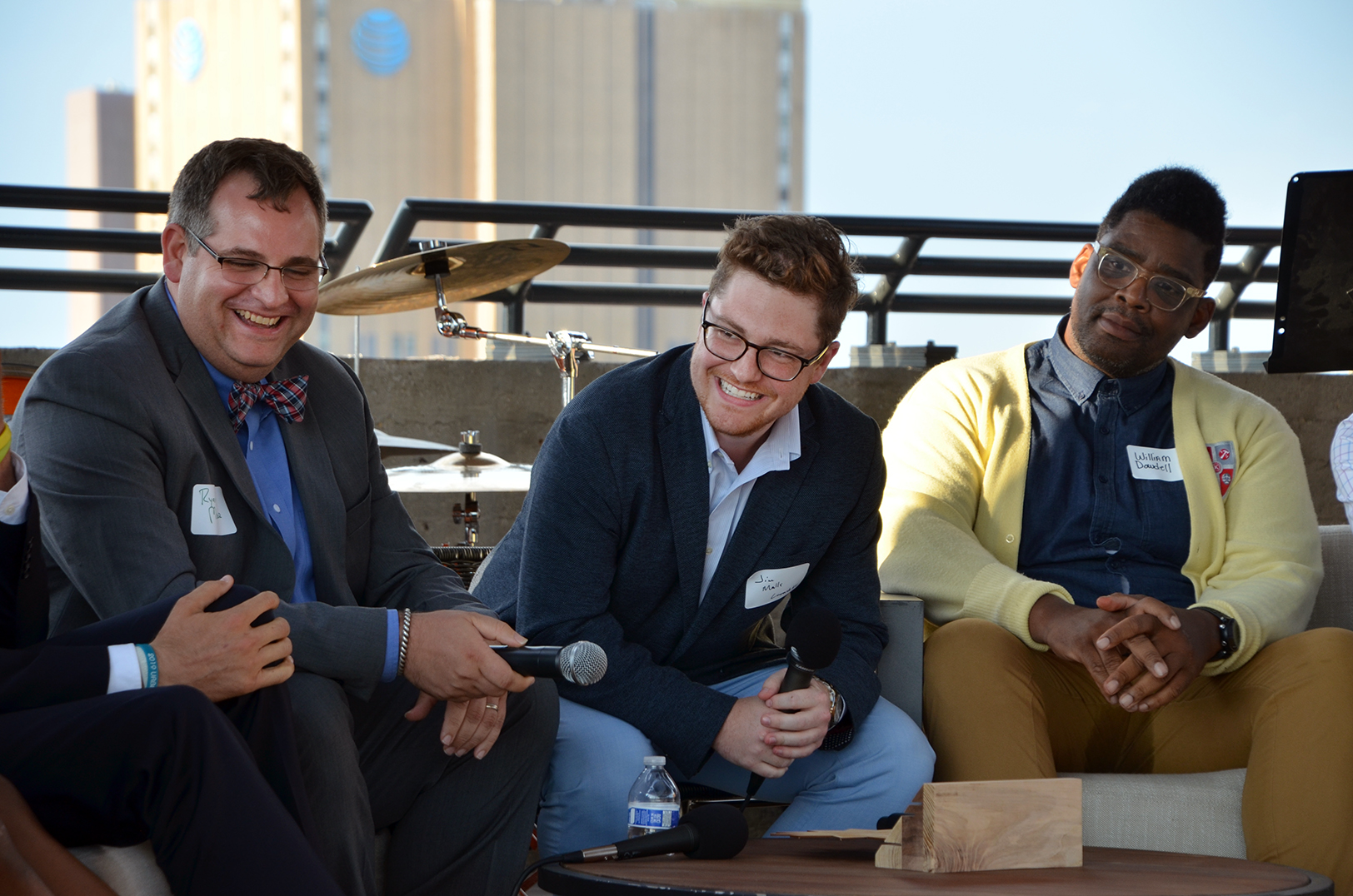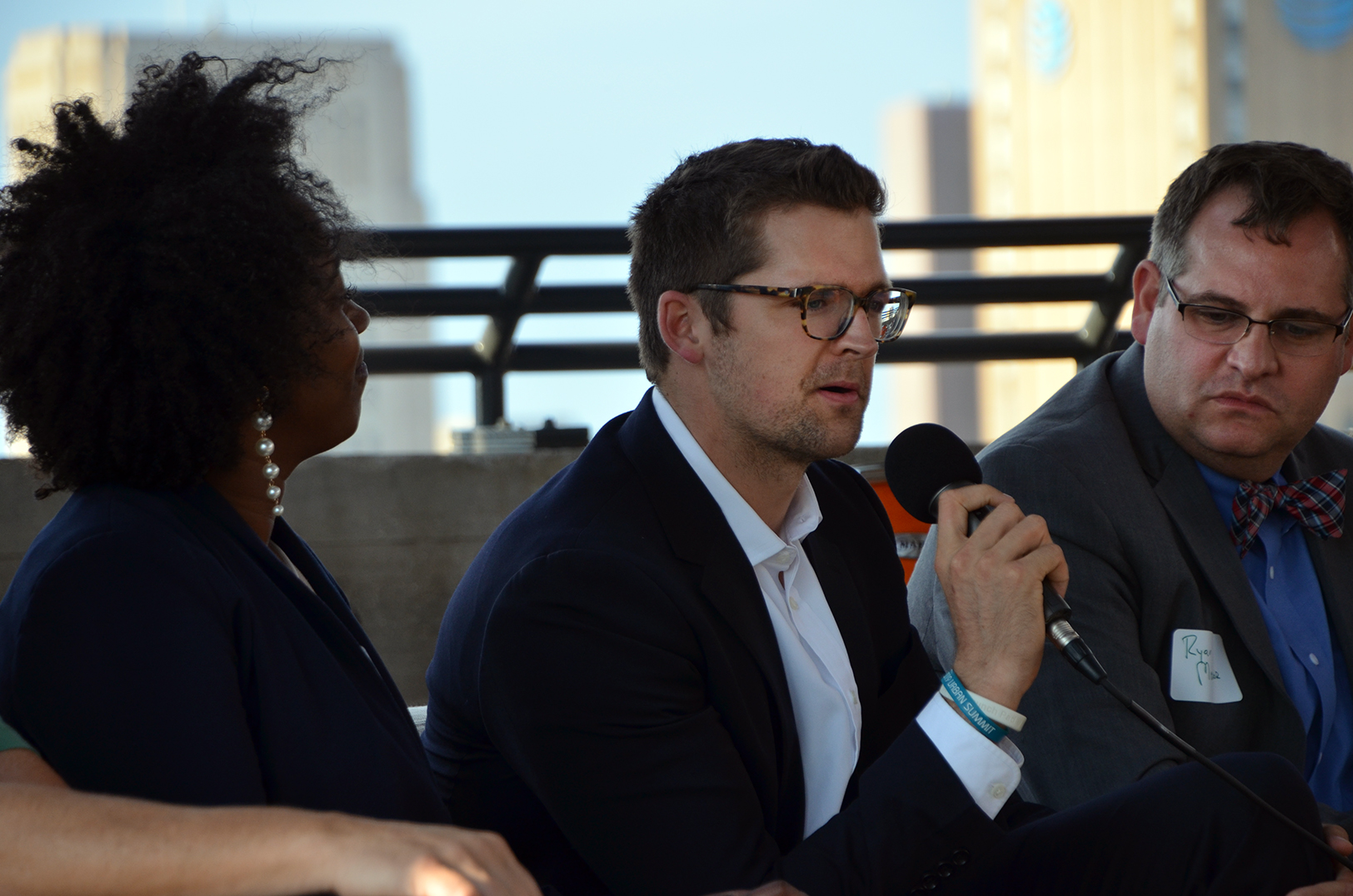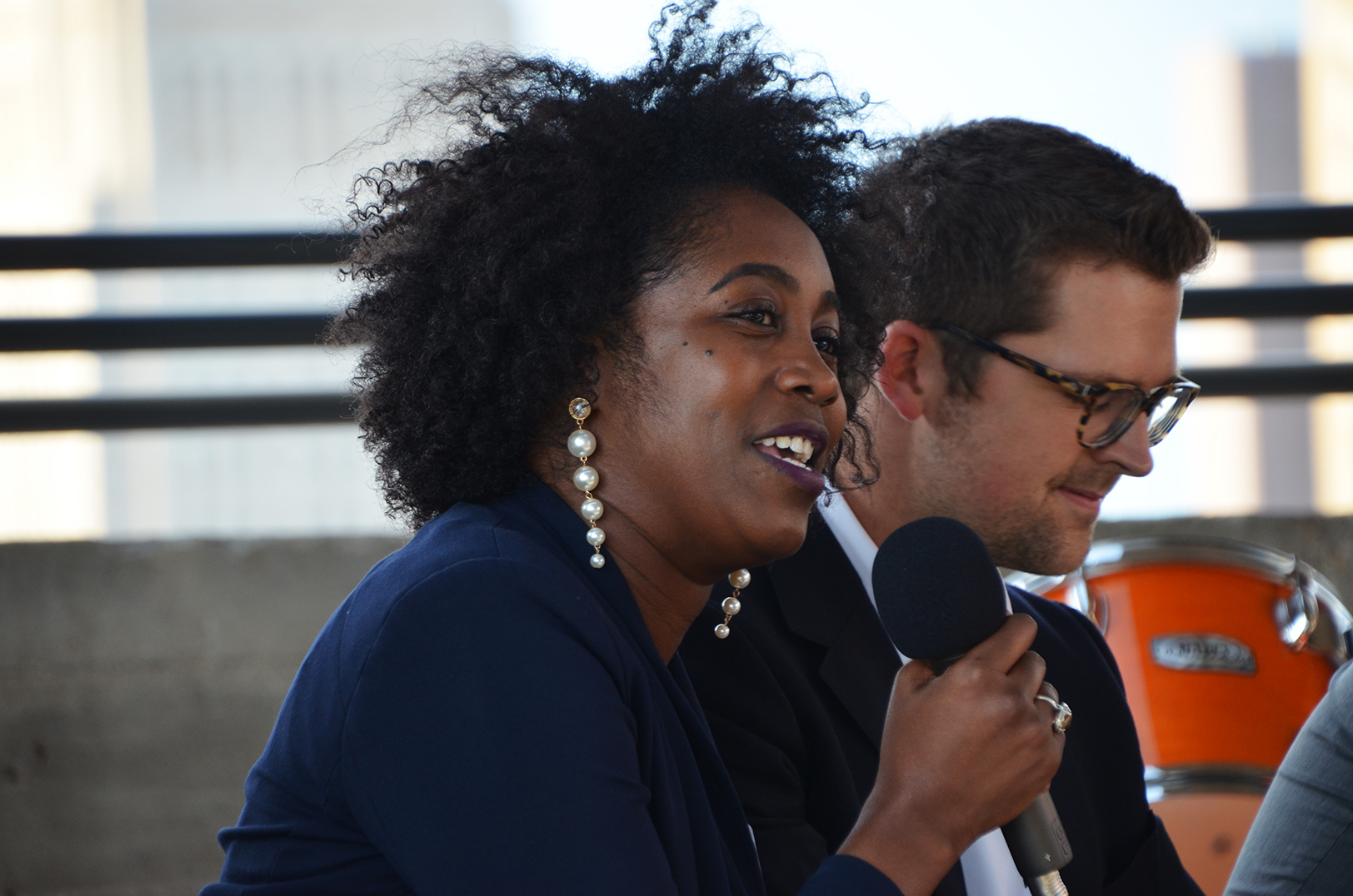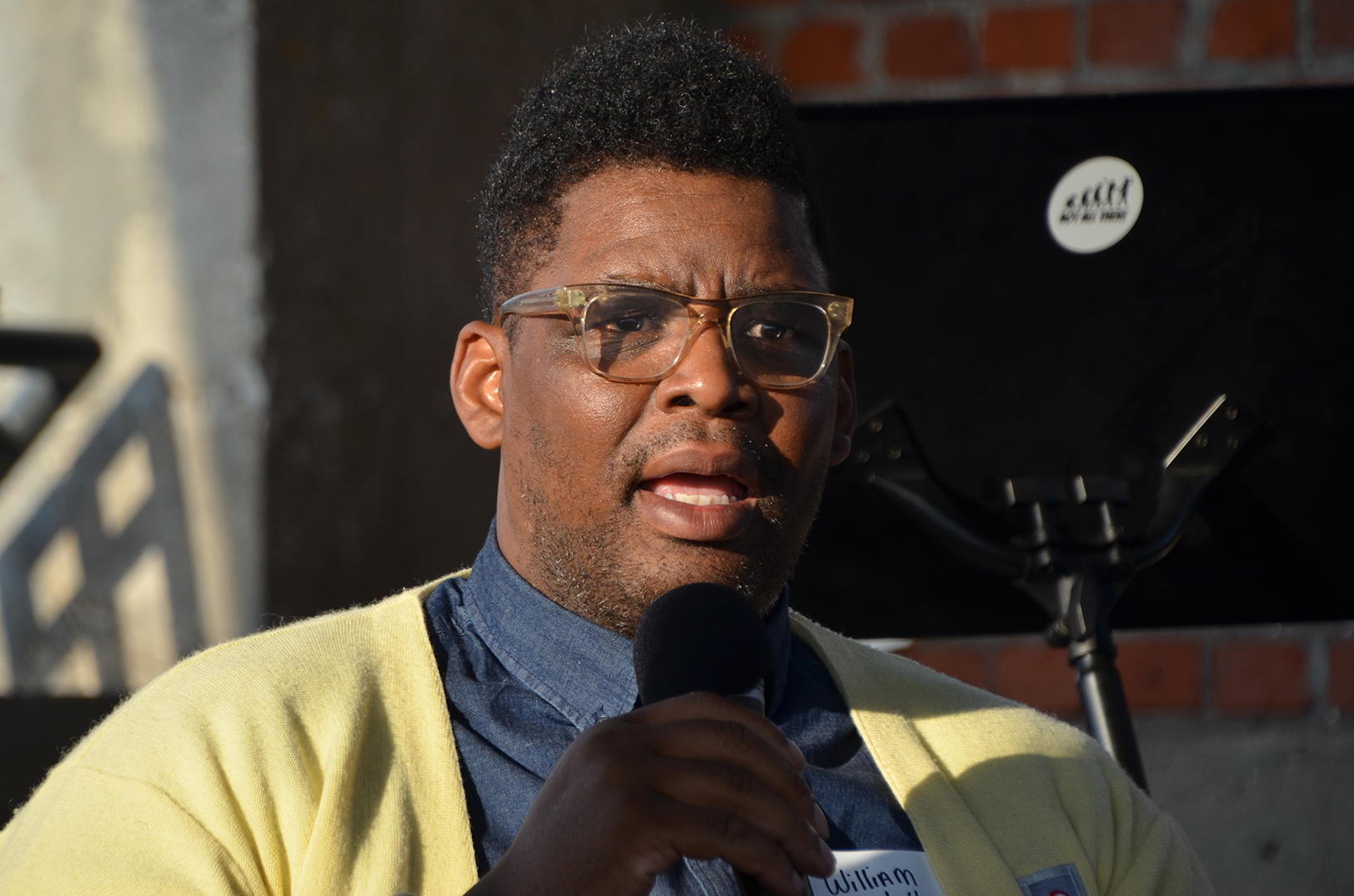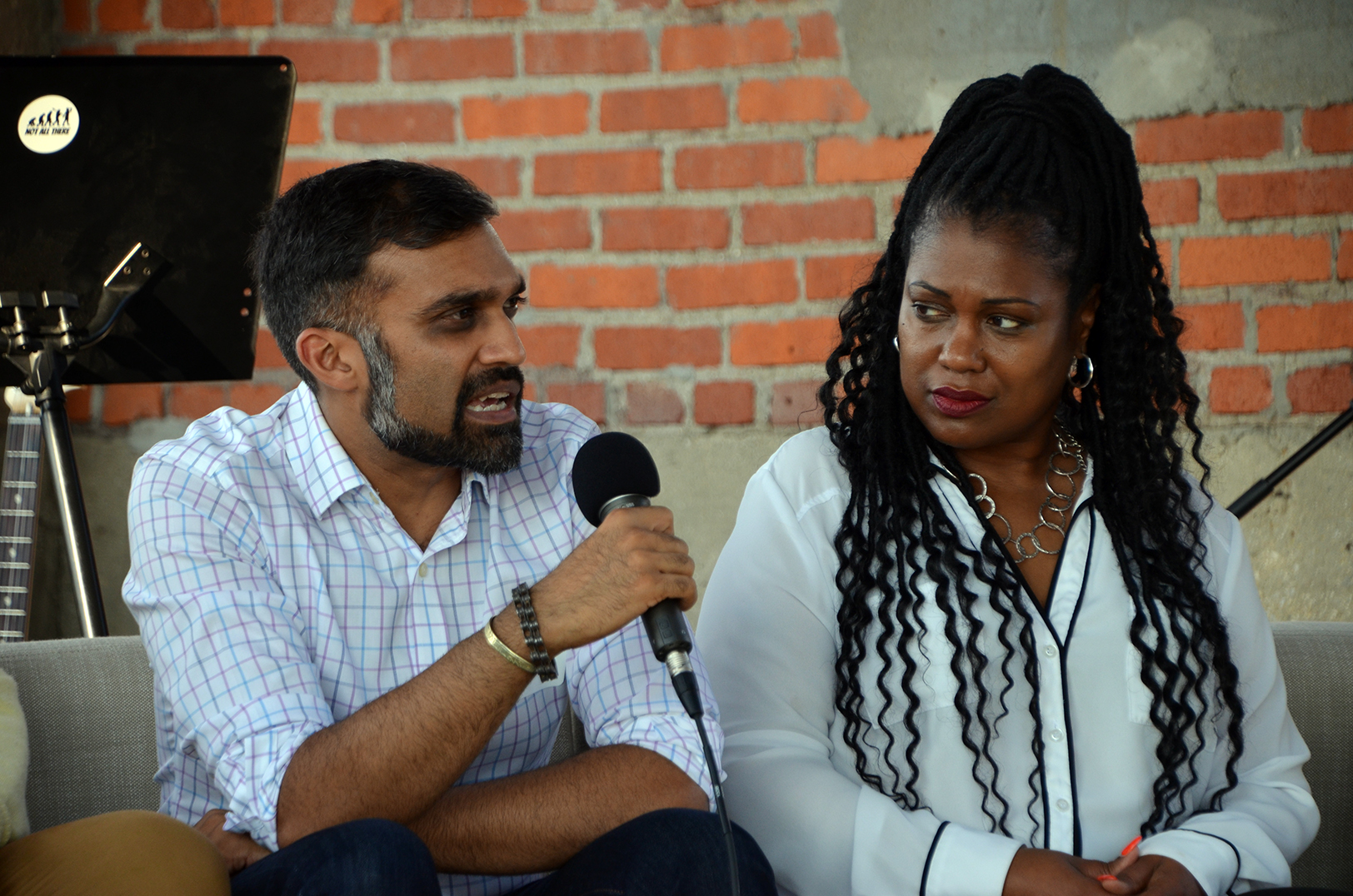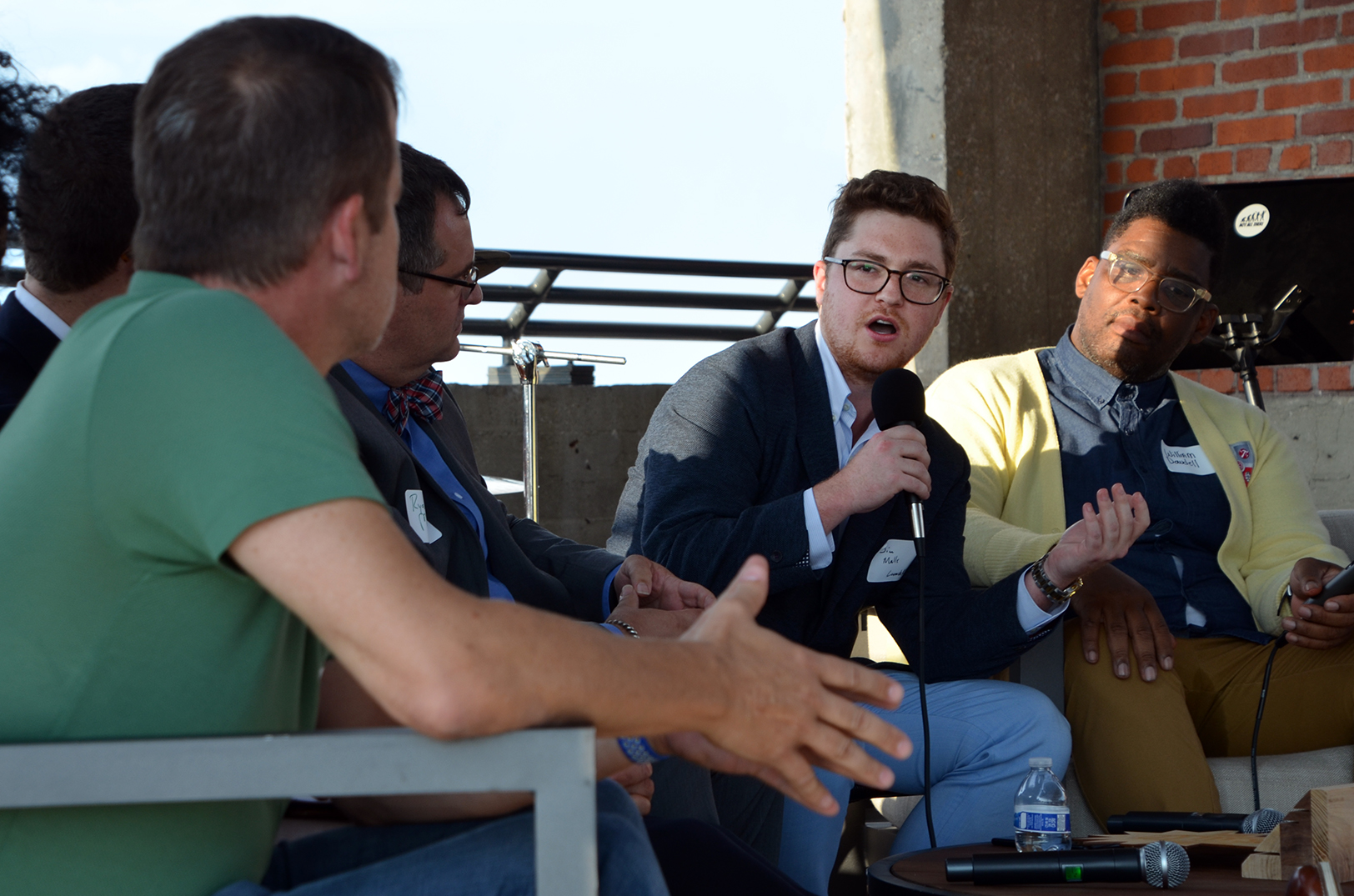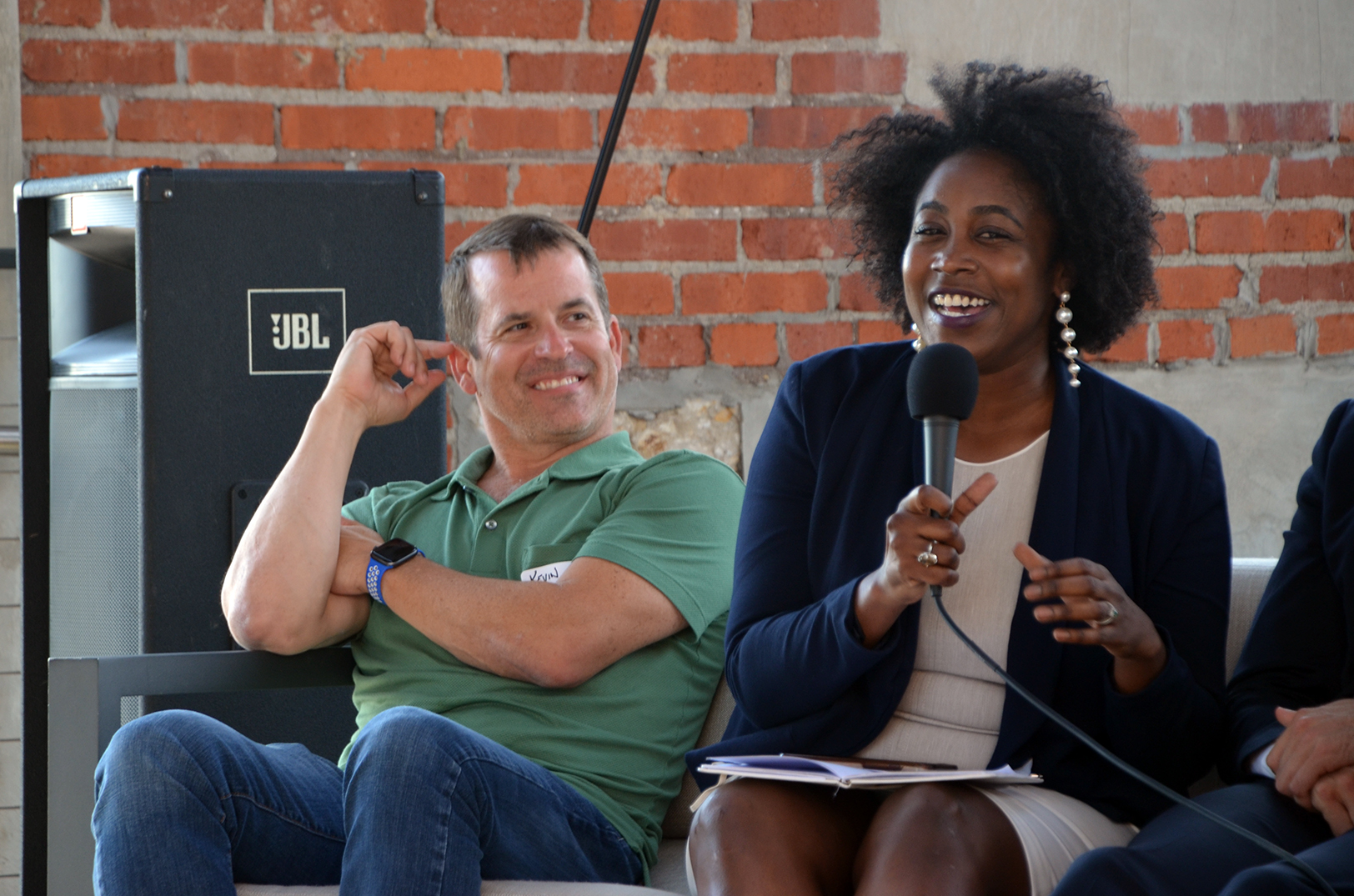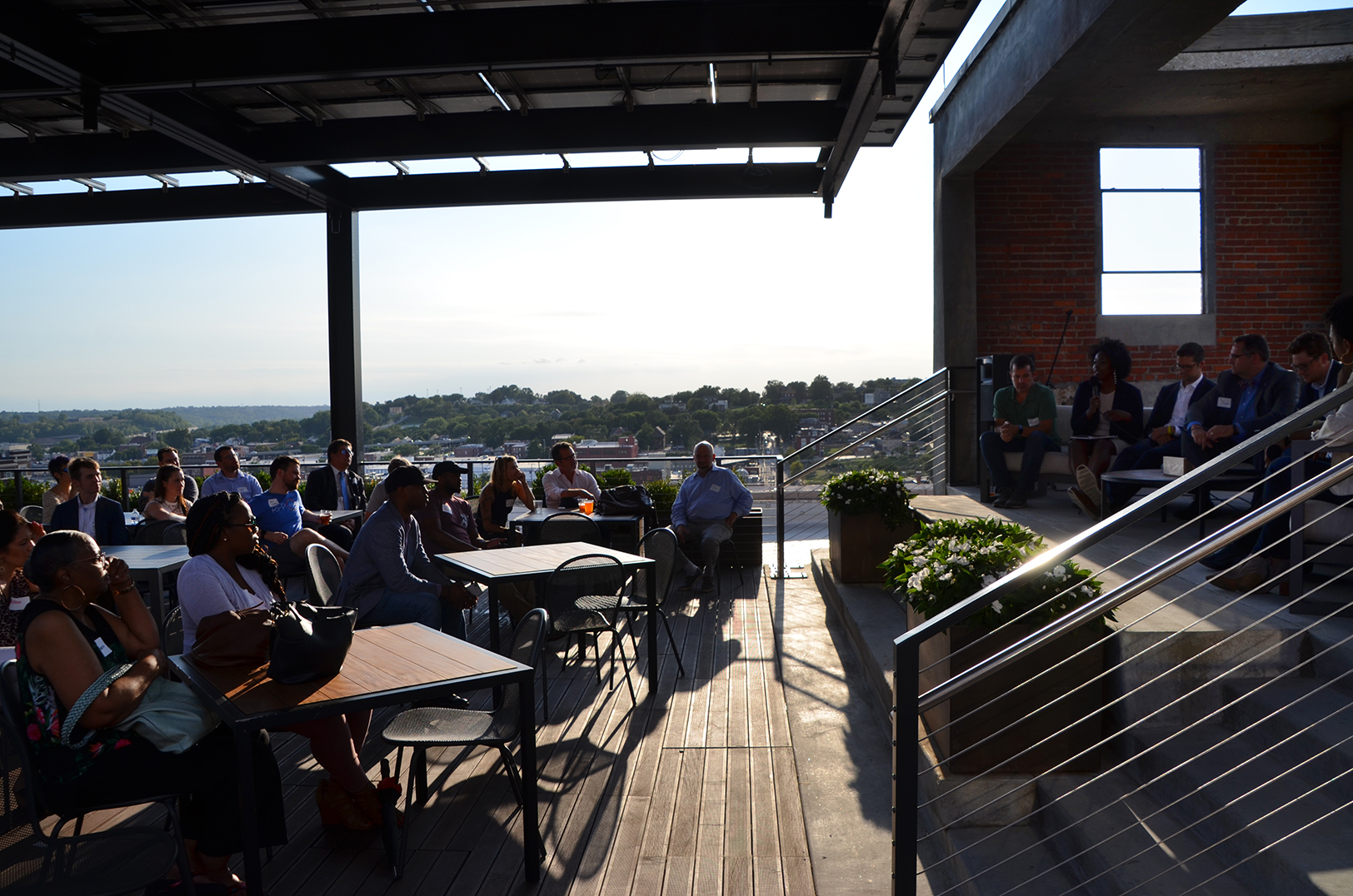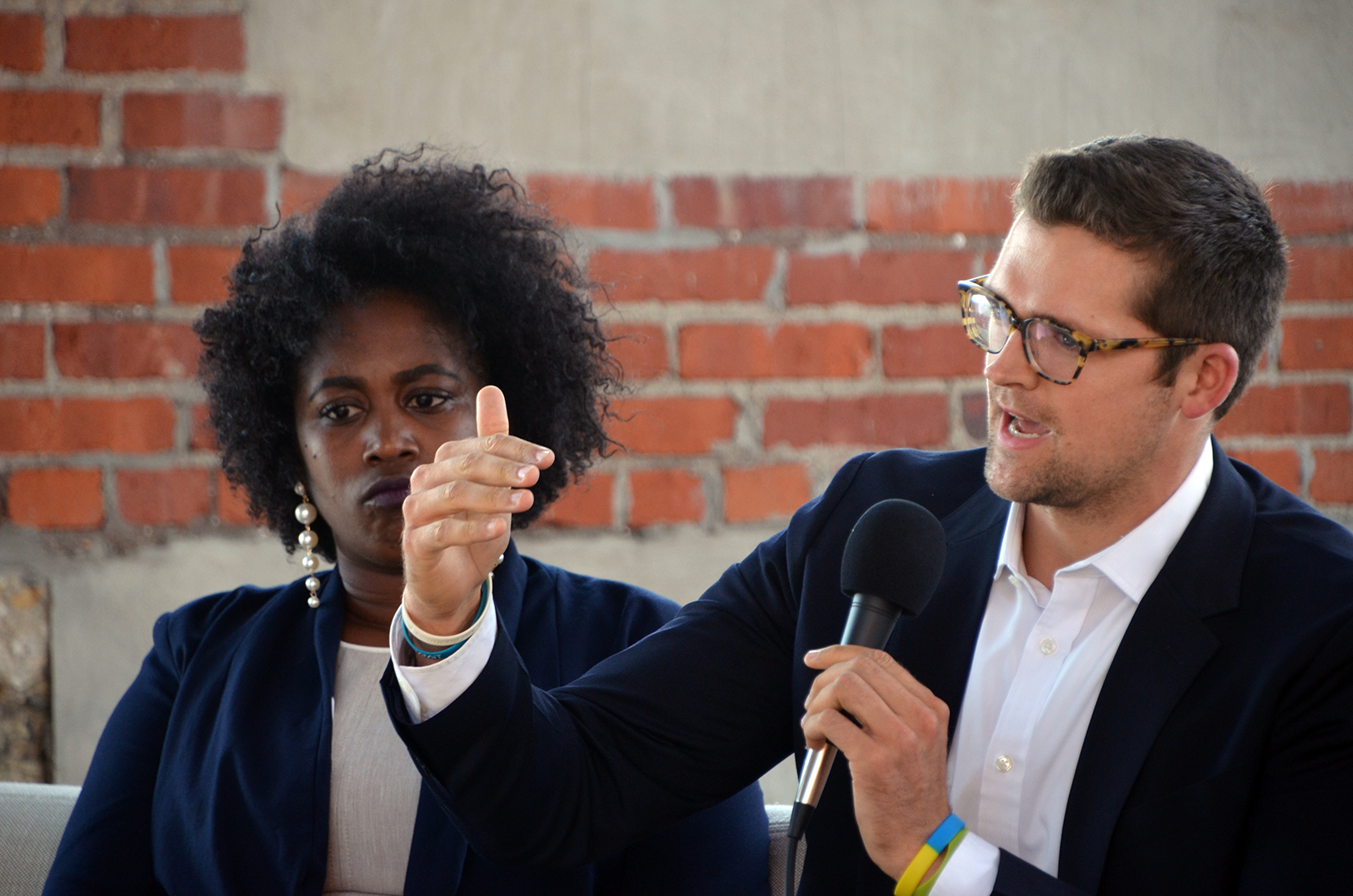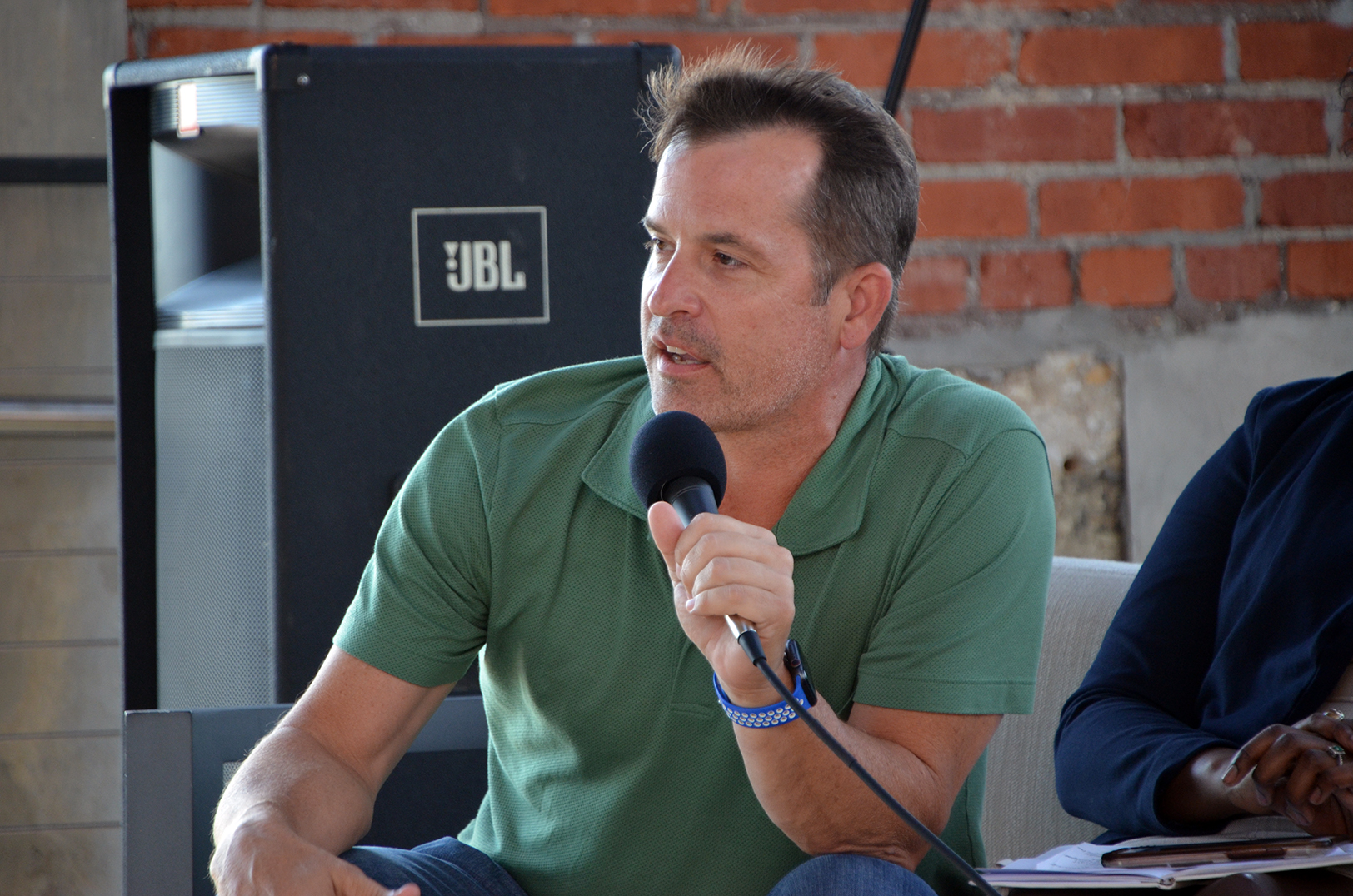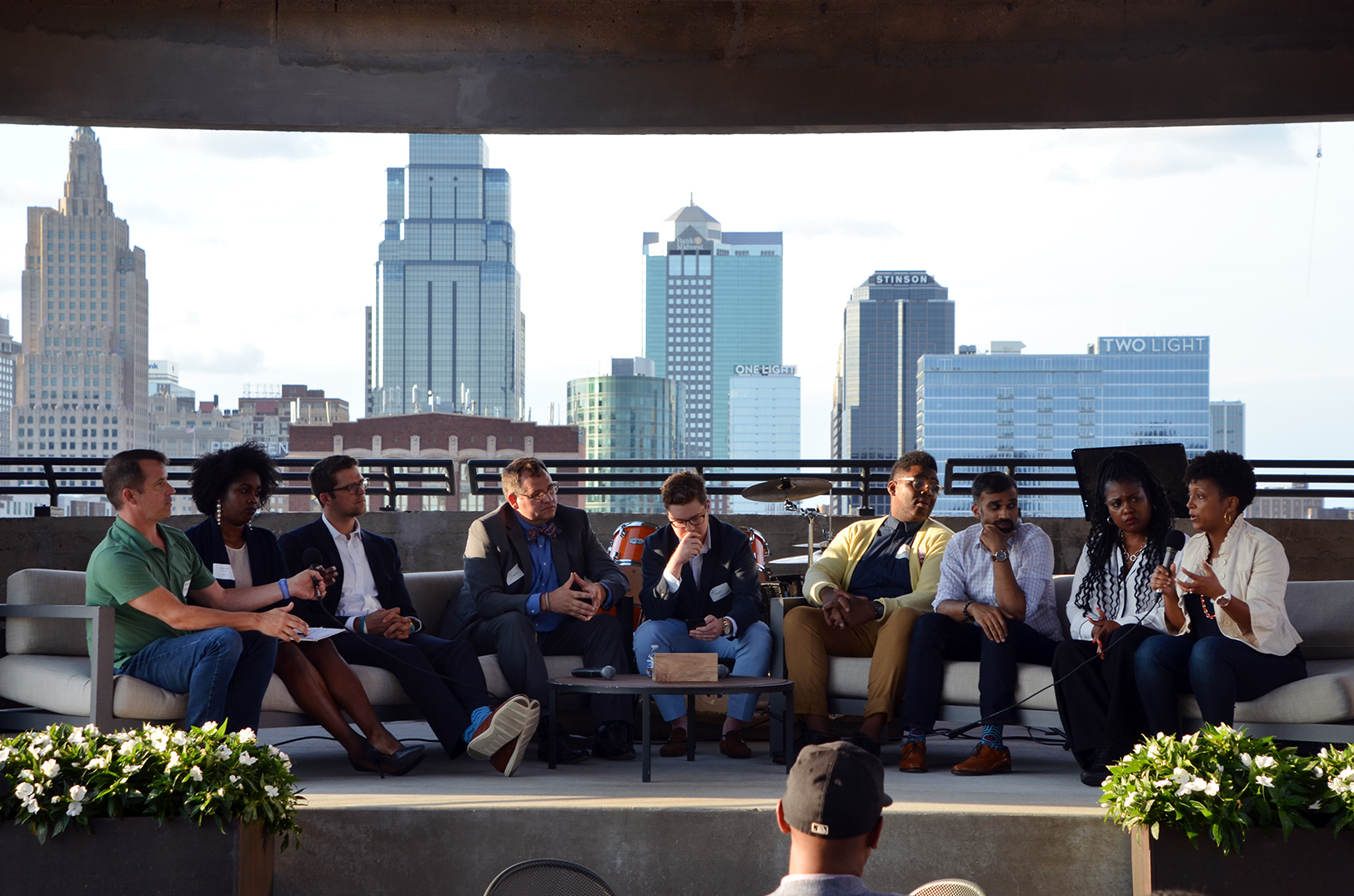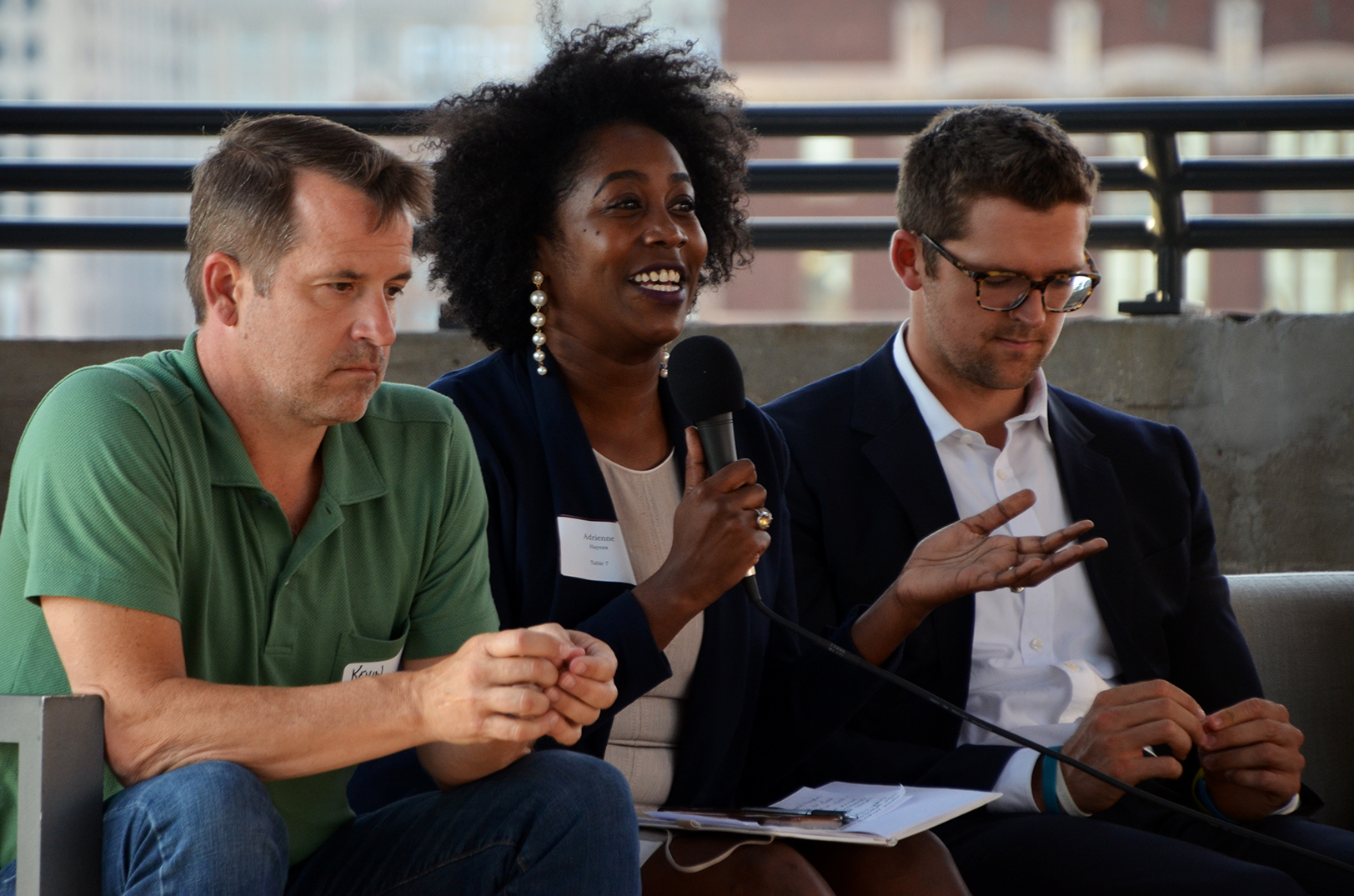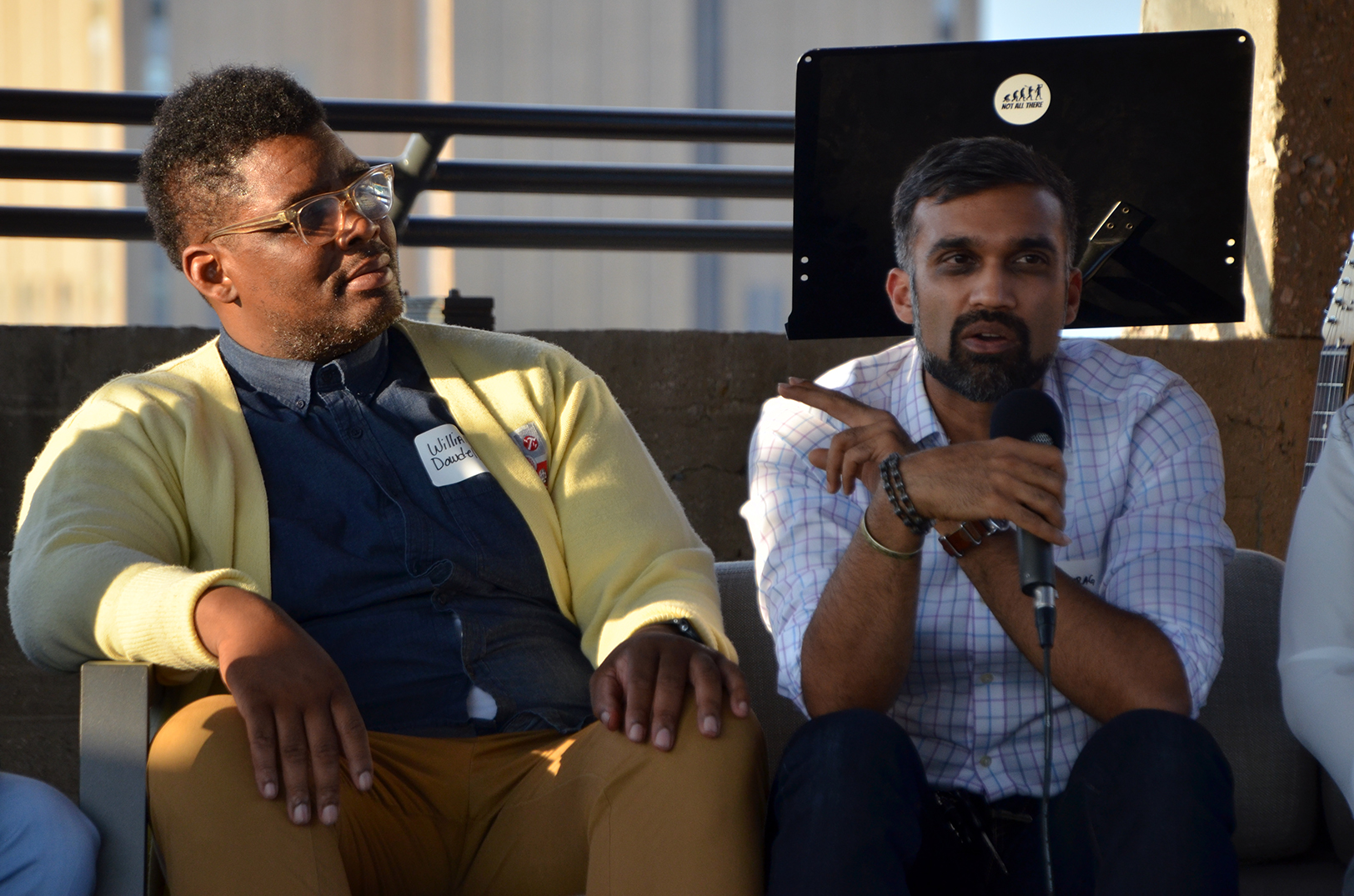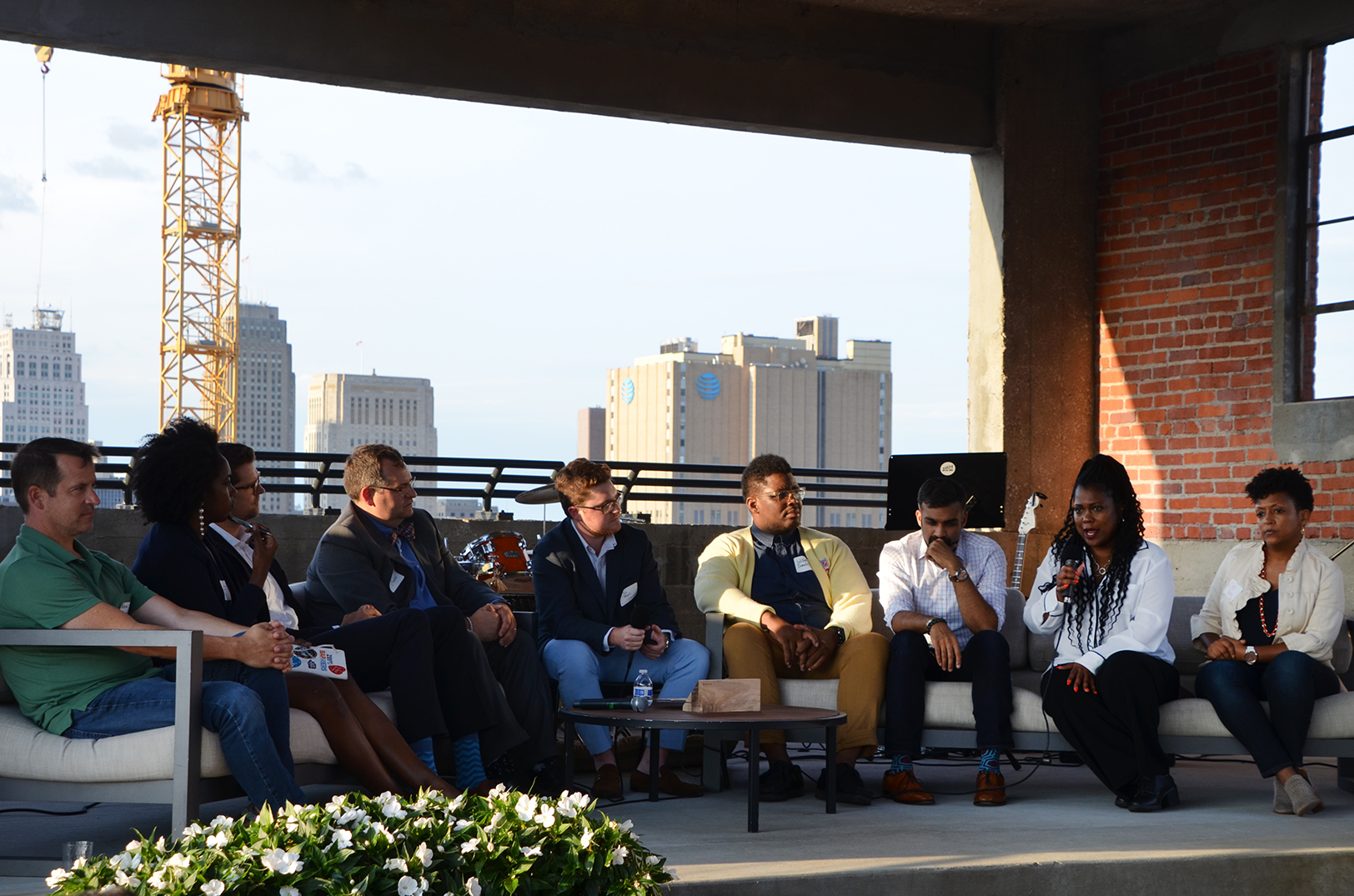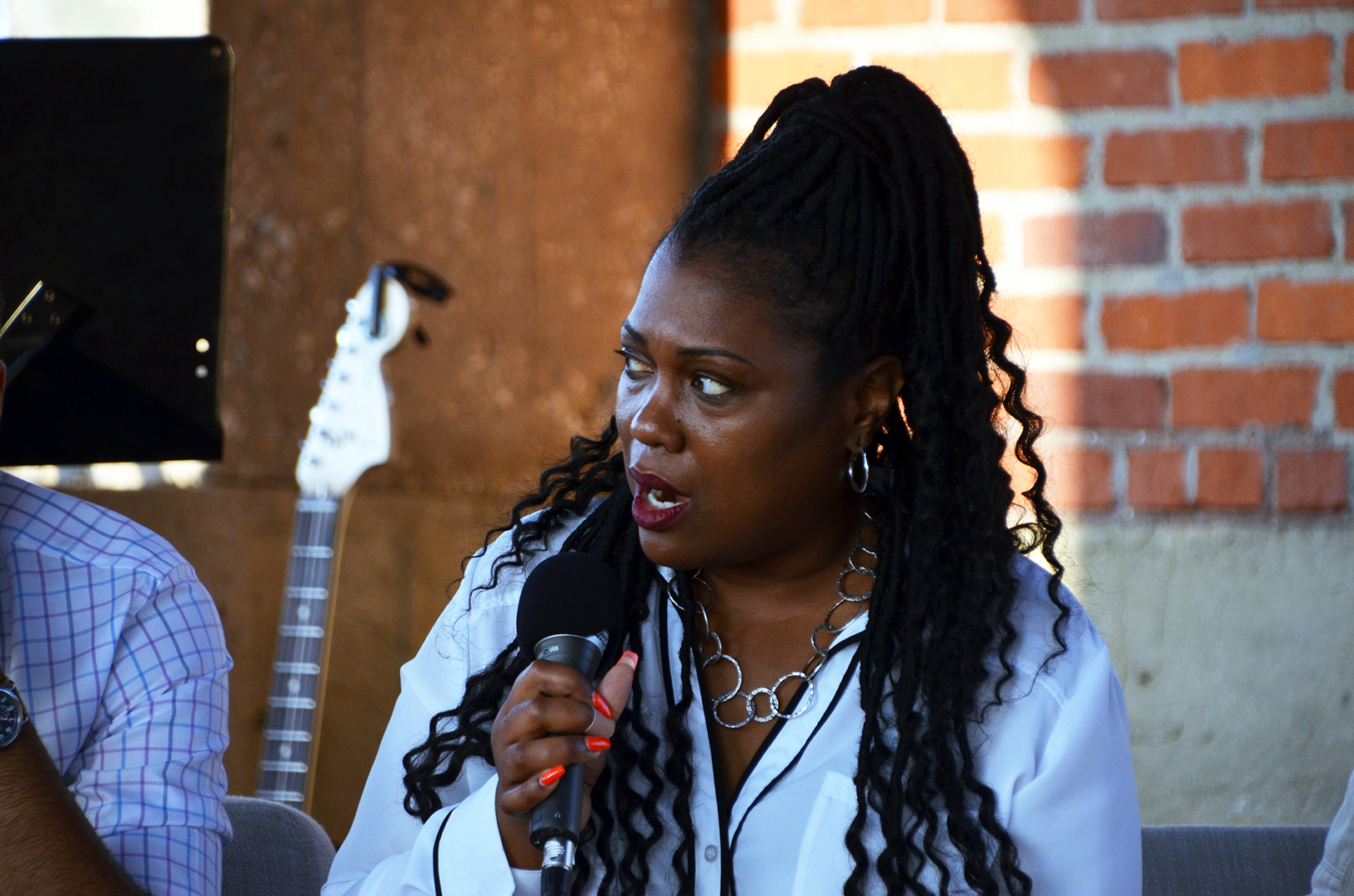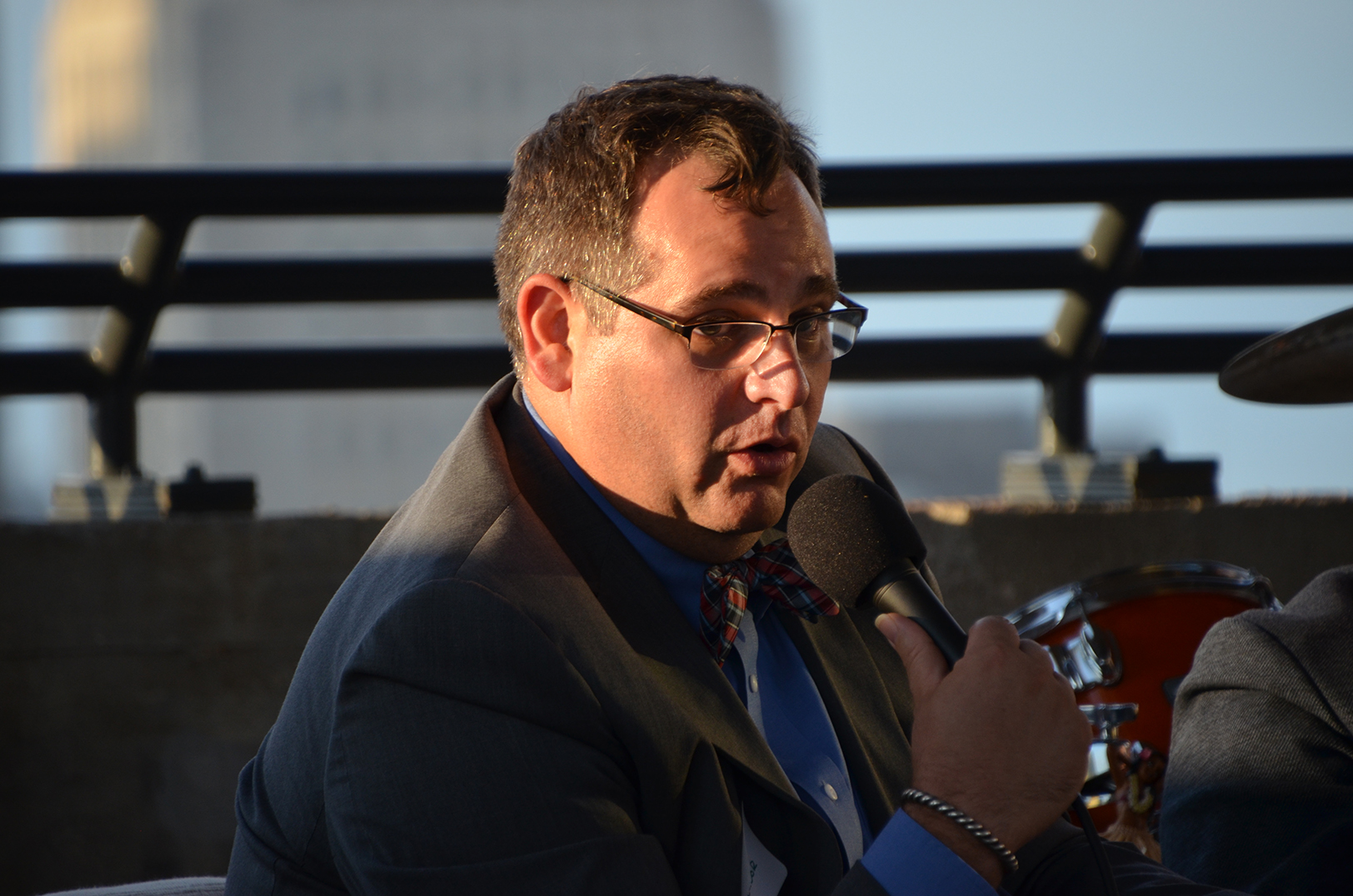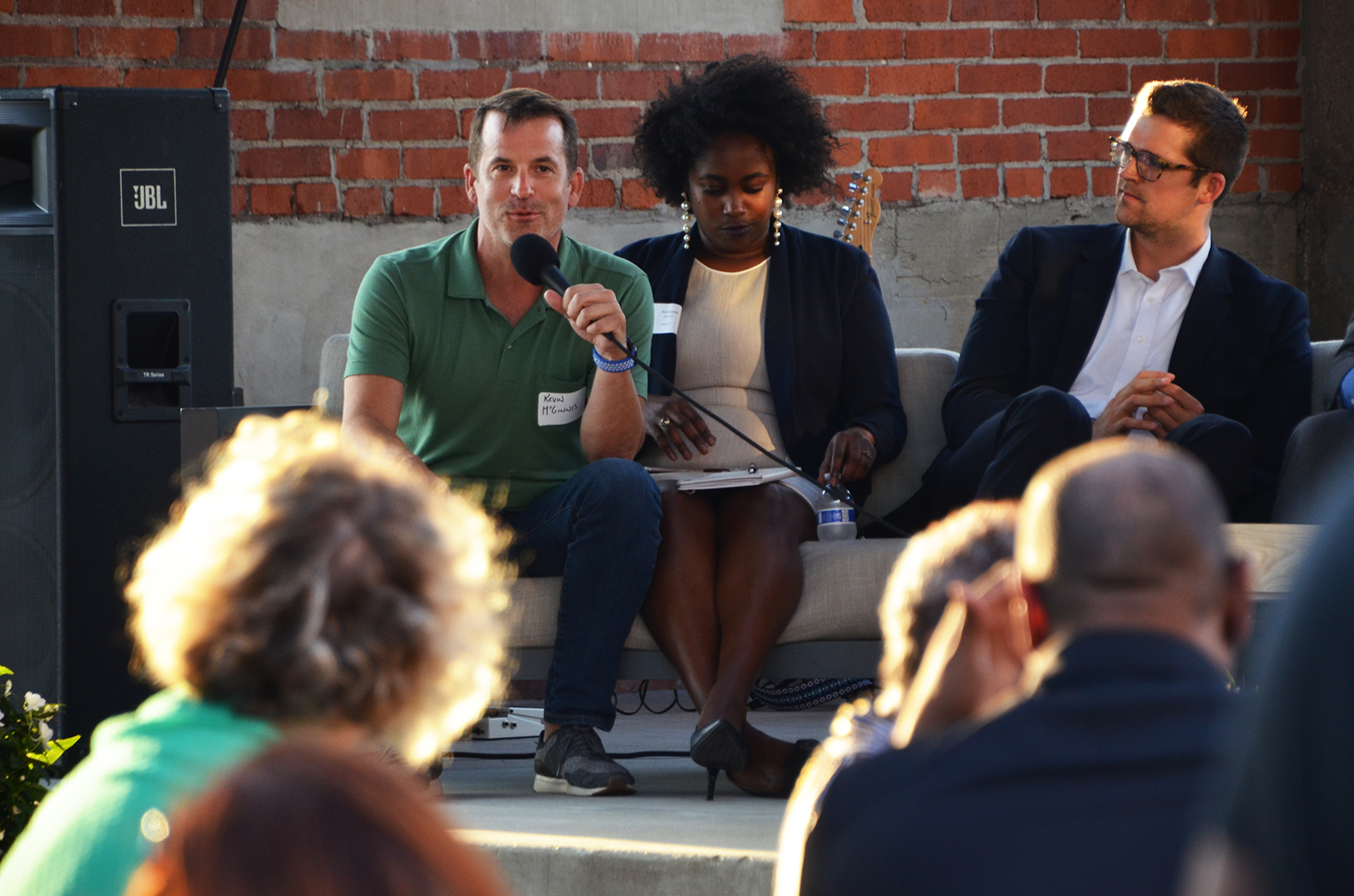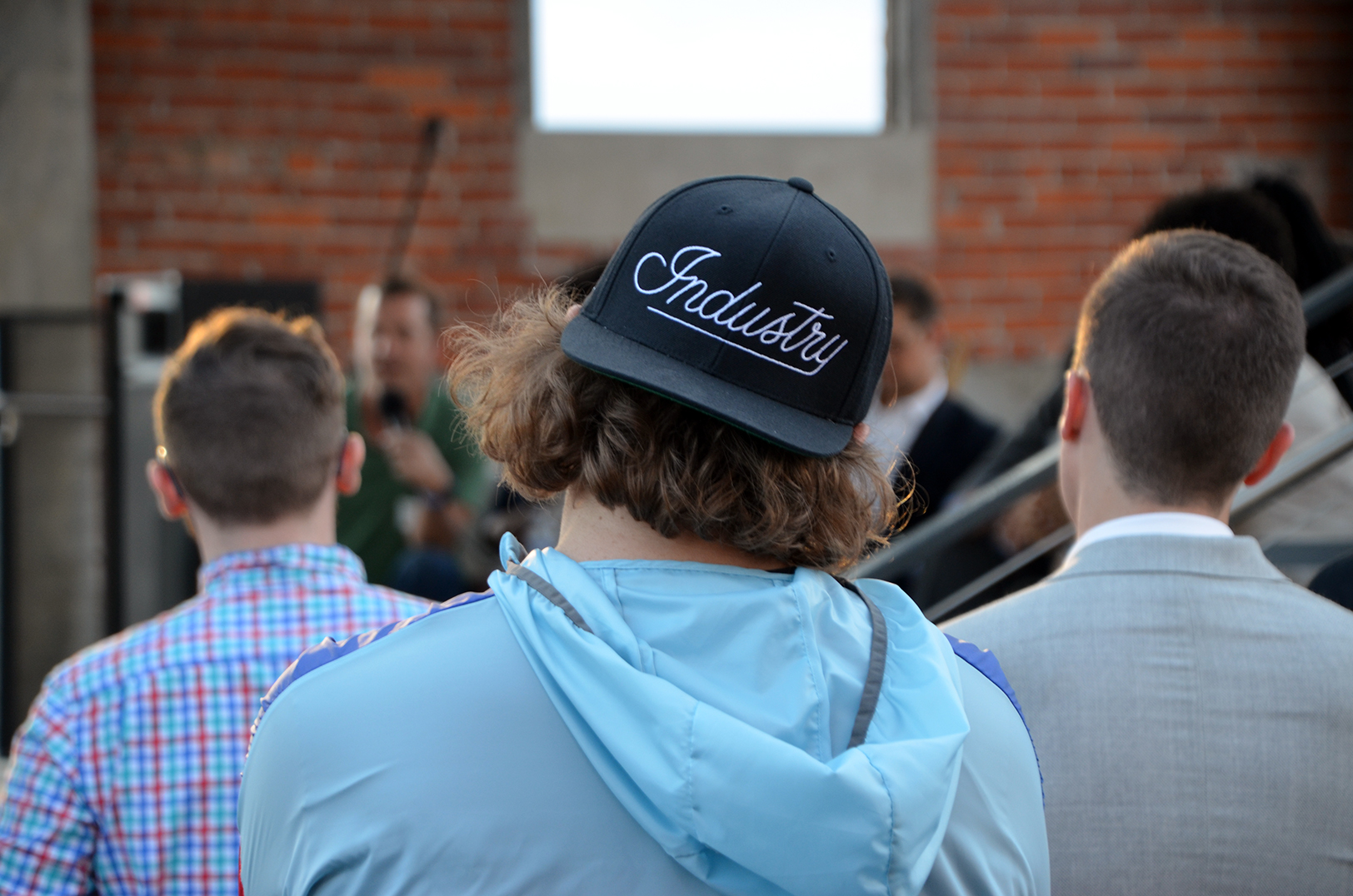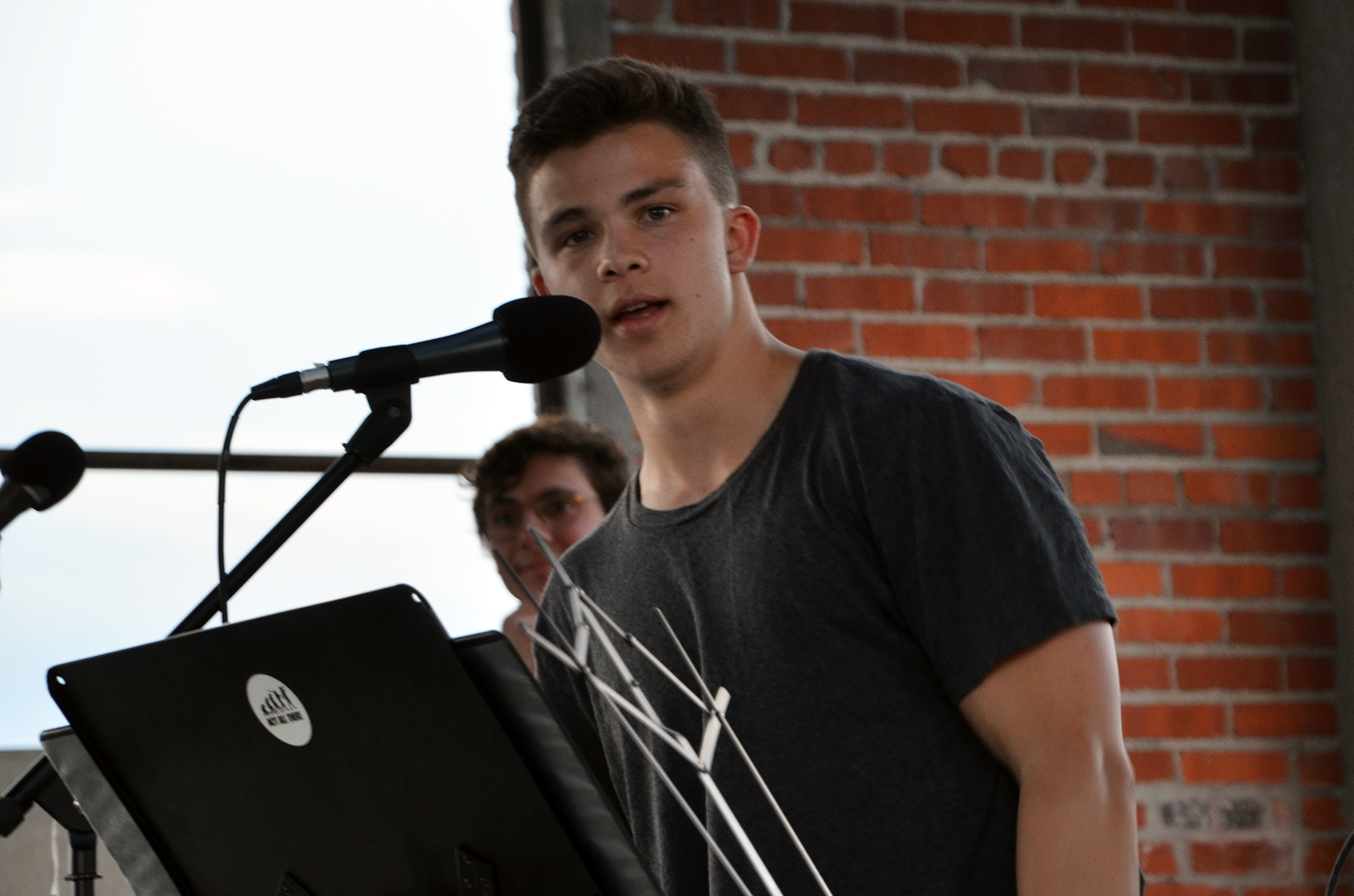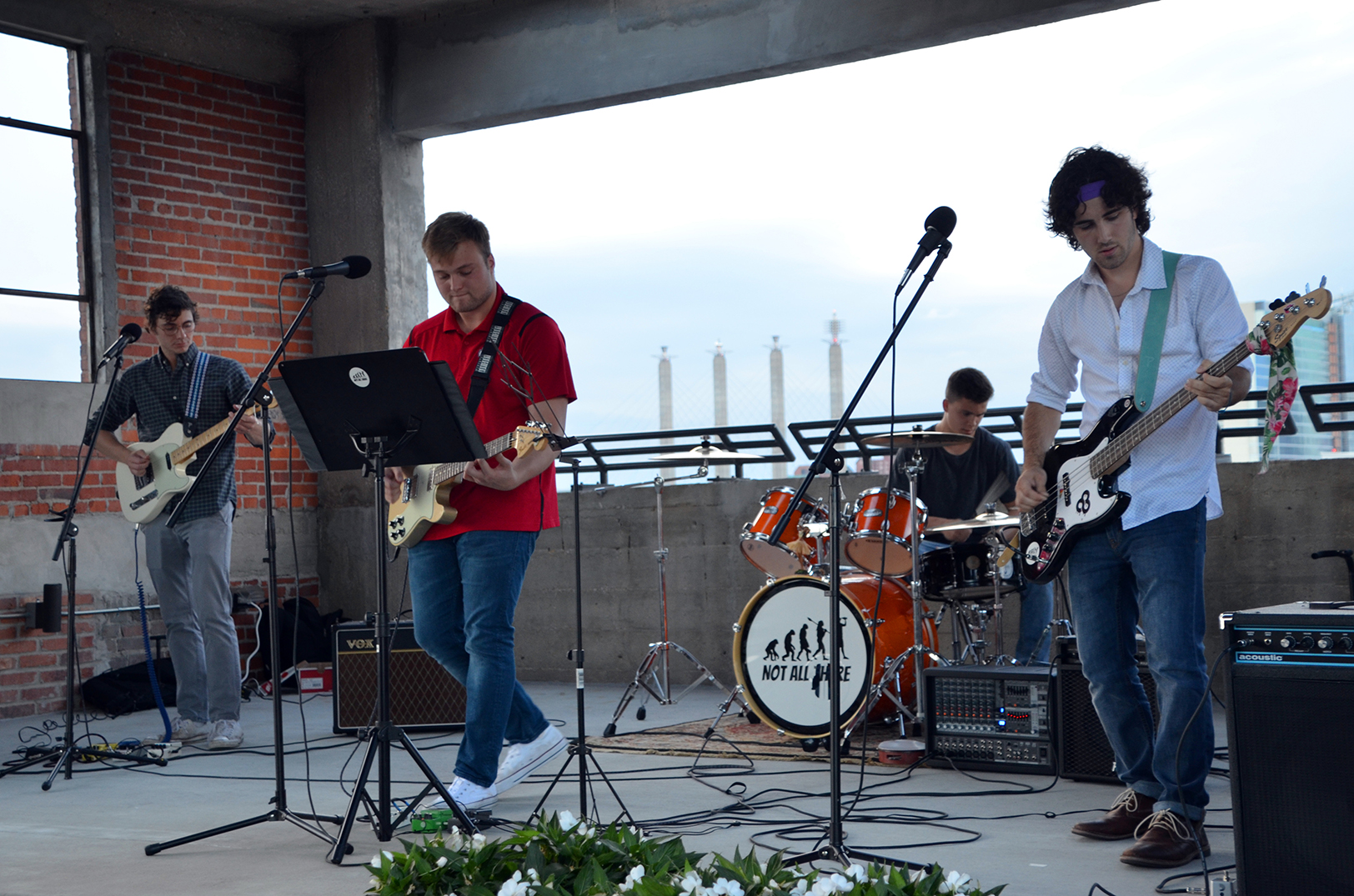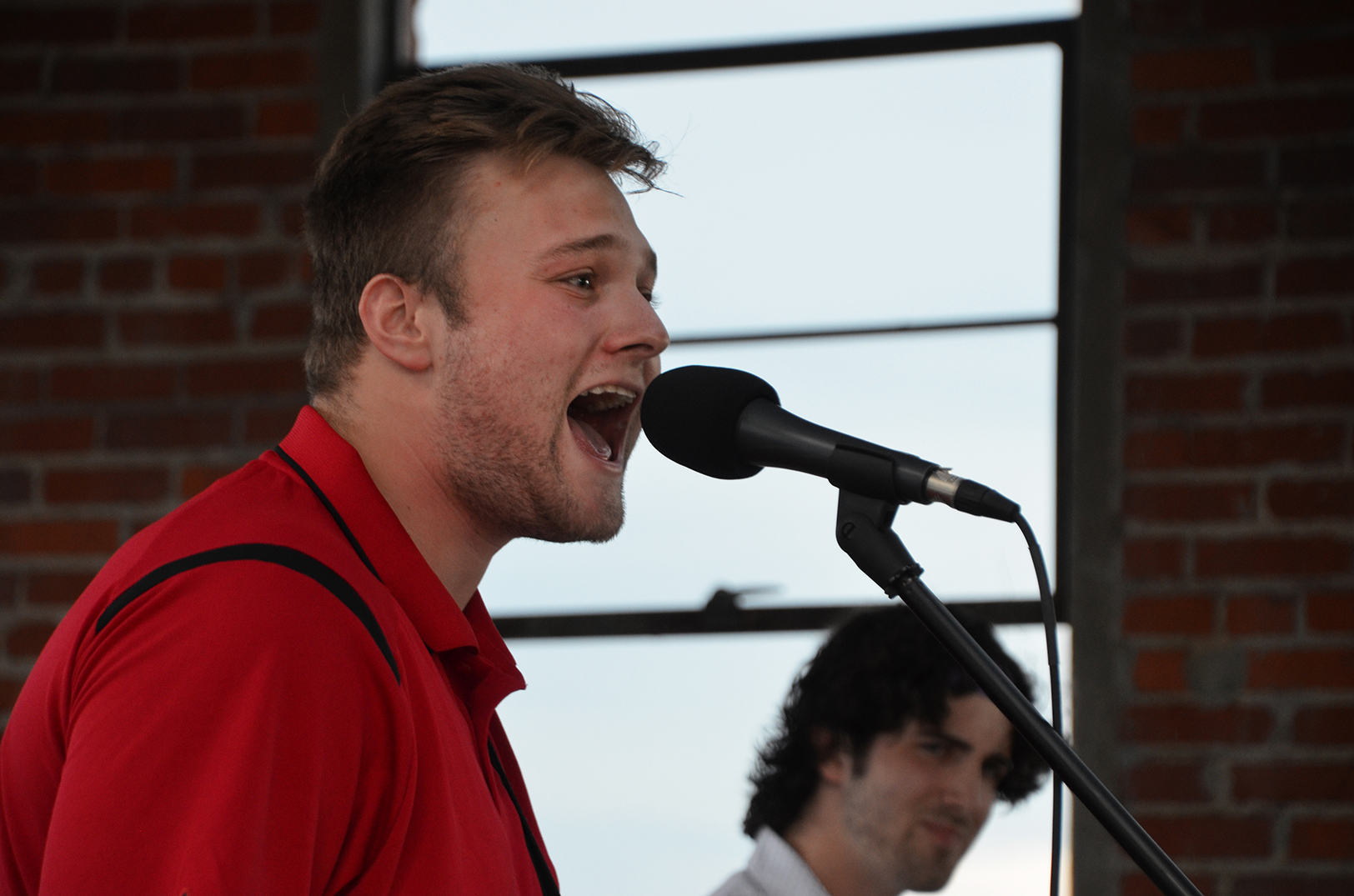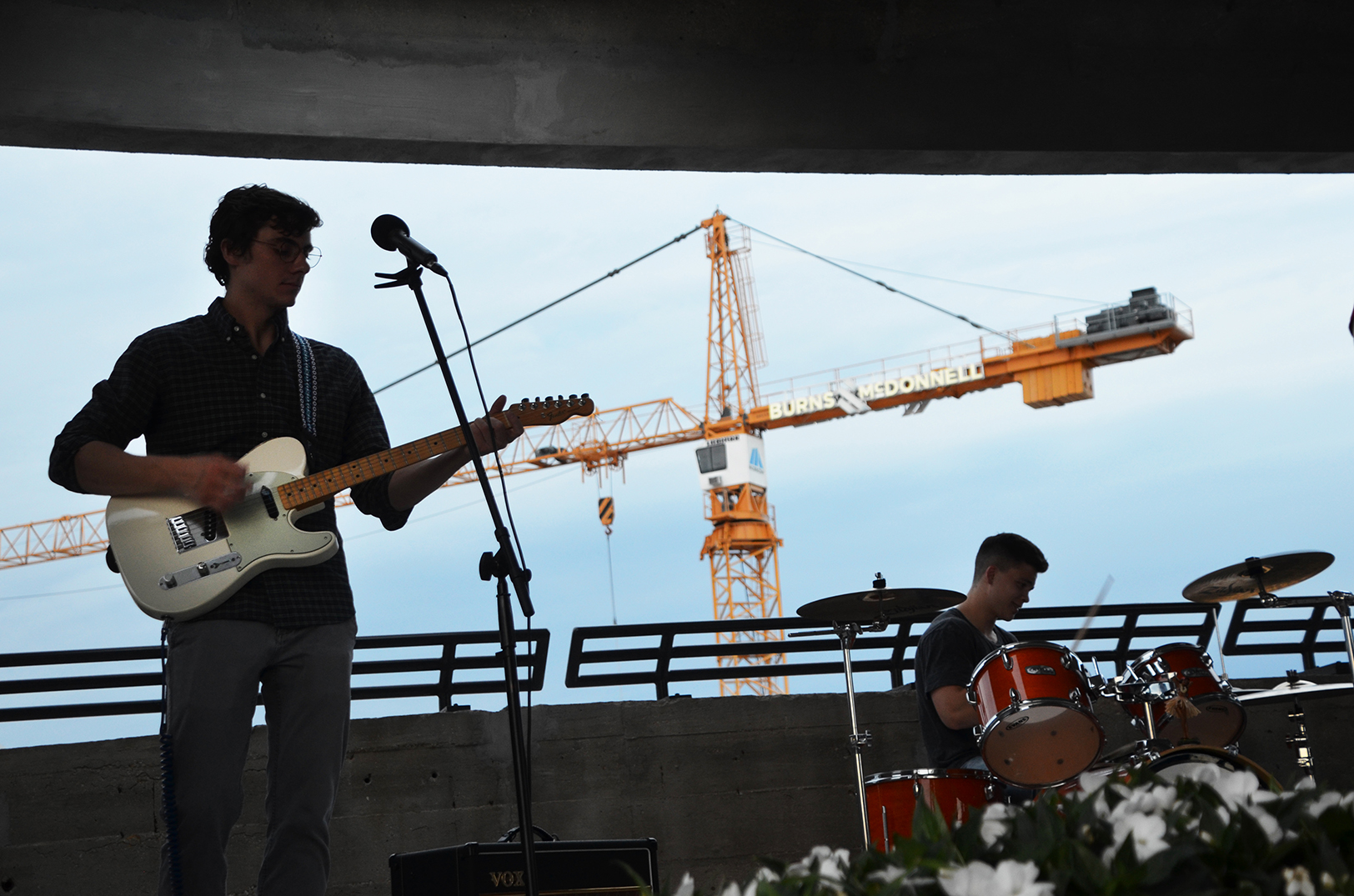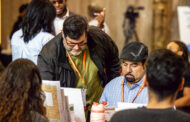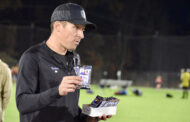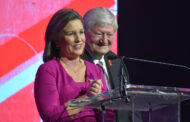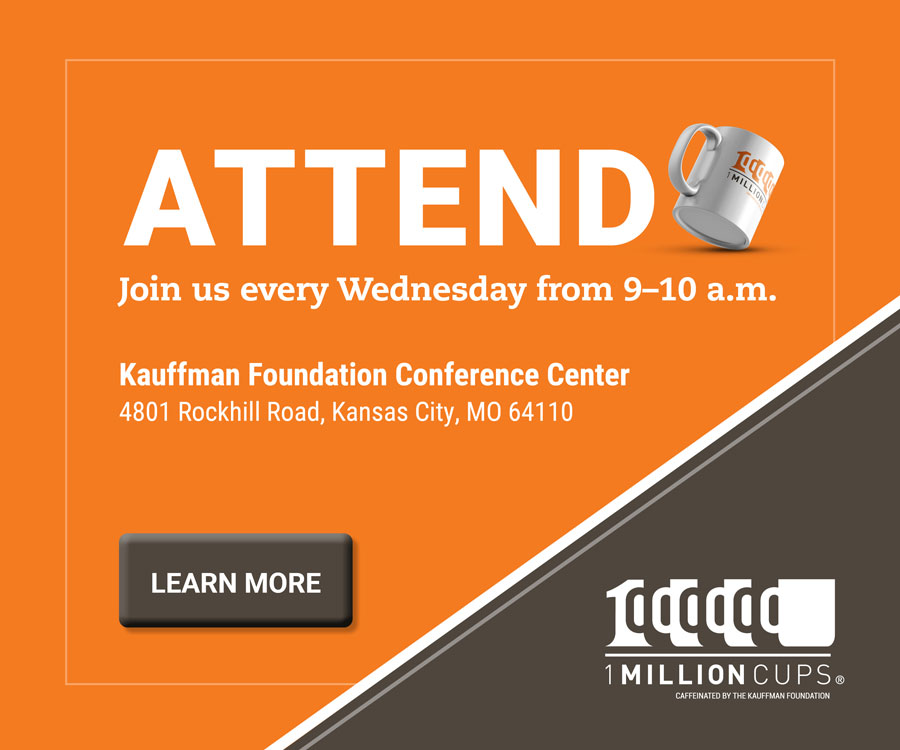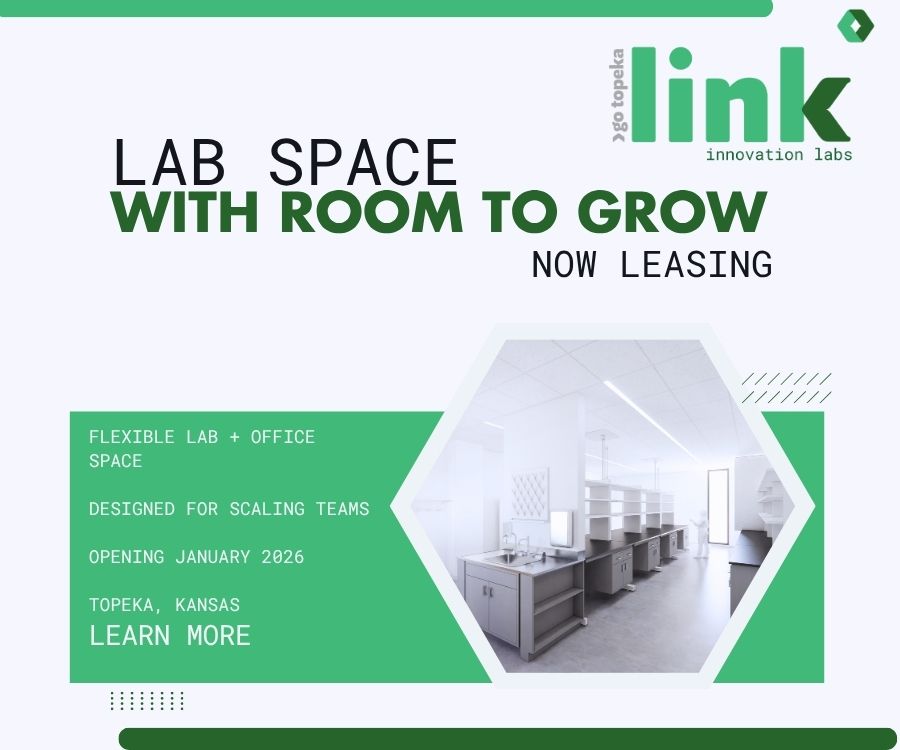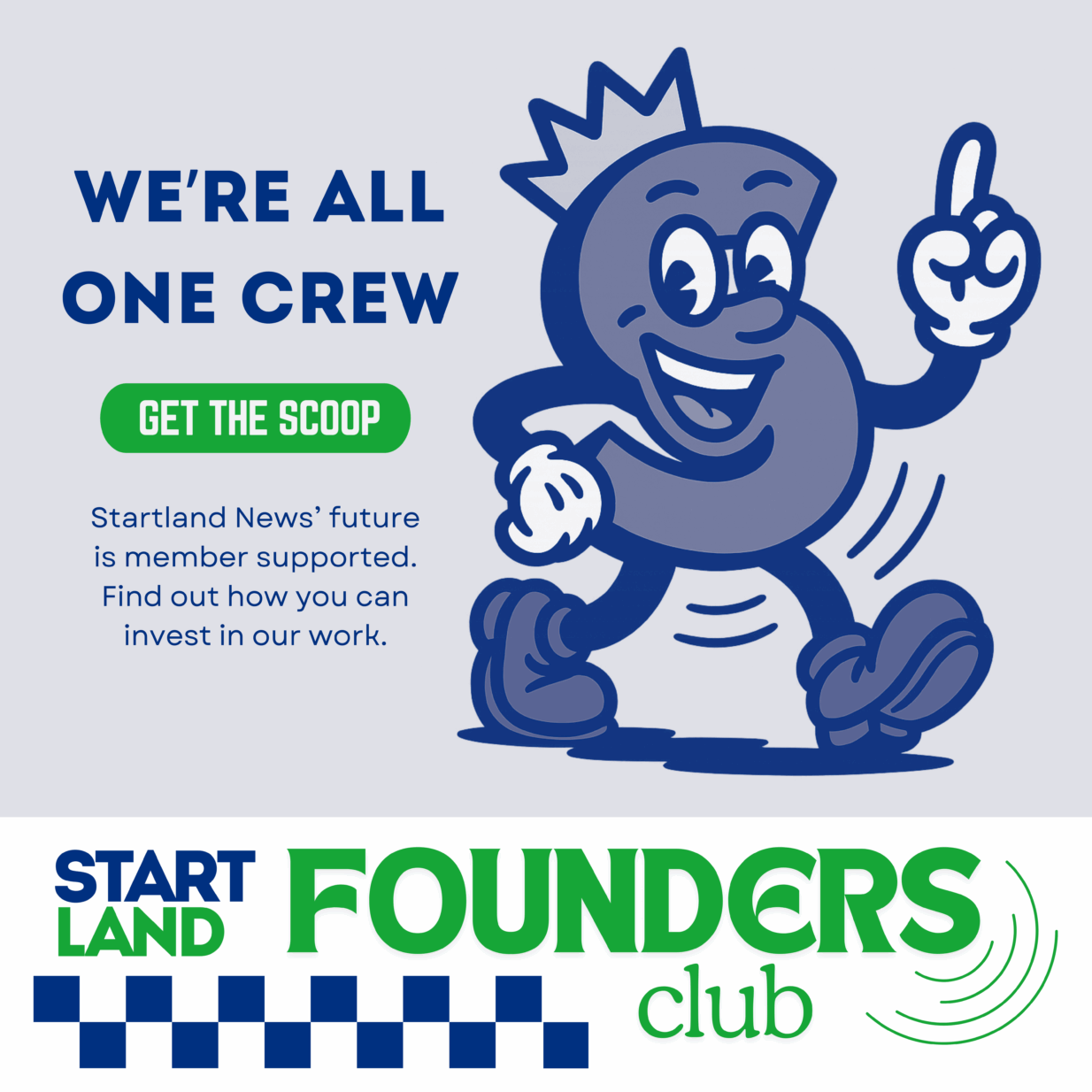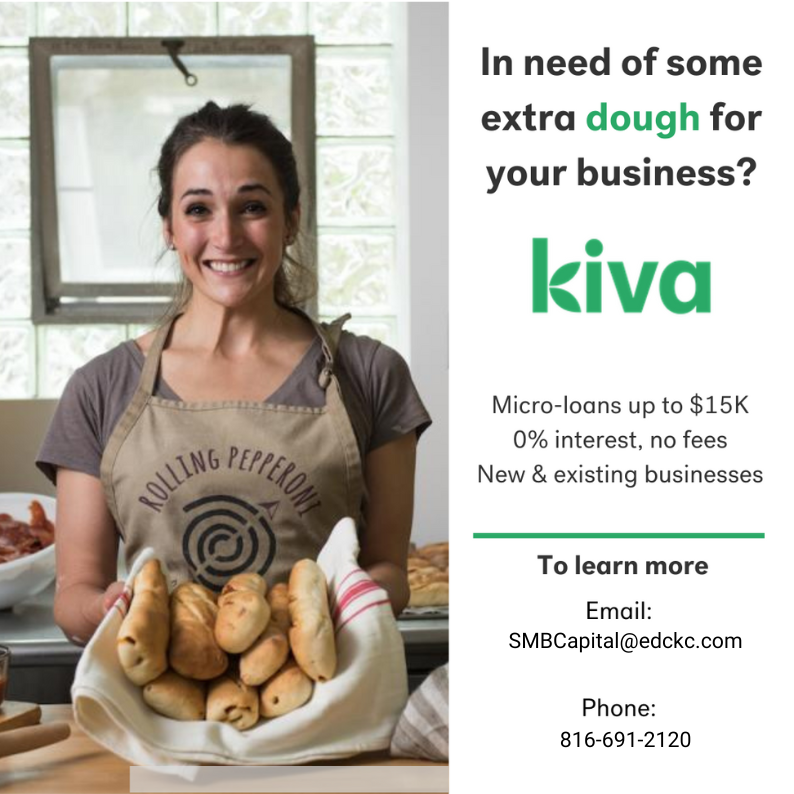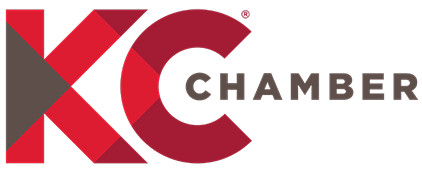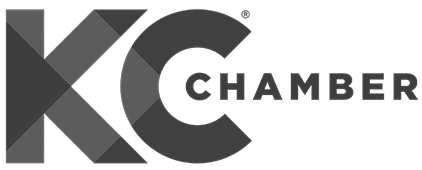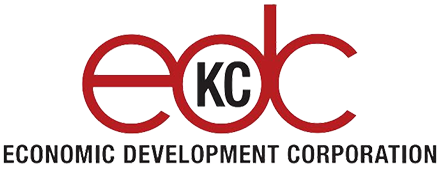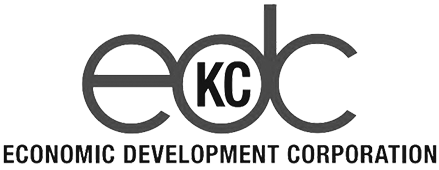Place and prosperity go hand-in-hand, said William Dowdell. Less clear, however, is how developers and communities will strike a balance in their efforts to generate innovation and wealth in Kansas City.
“Geography is a big part of this. When we talk about expanding opportunity and bringing innovation, we also have to look at those spaces and places and communities which have been thoroughly forgotten or overlooked,” said Dowdell, program director for Hire KC. “One thing people use to measure success is how many cranes a city has overhead. You can point to the cranes and say, ‘This is a very progressive, innovative city under development.’ But I think the larger point is to count where the cranes are, and that’s telling you where the development really is. It’s telling you where the innovation is.”
Dowdell’s point — punctuated by a bright yellow construction crane hanging over the Crossroads Arts District just a few hundred feet away — came amid a recent panel conversation during Startland’s Innovation Exchange on “Building Innovation Hubs.” Stakeholders from across the spectrum of Kansas City’s entrepreneur ecosystem joined the Husch Blackwell-sponsored discussion of responsible place-making for innovation districts, particularly for those set within existing, distressed communities.
“Many of those folks in these areas are already working, they’re hustling, they’re building their businesses — but in silos,” said Adrienne Haynes, Ewing Marion Kauffman Foundation innovator in residence and managing partner at SEED Law. “How can innovation districts work together with them to create density, to make sure everyone is part of the pipeline?”
One such project, the Keystone District, is planned just blocks to the east of the WeWork Corrigan Station rooftop where panelists shared their perspectives. The selected site near the 18th and Vine District is well removed from the downtown and Crossroads skyline rich with cranes and signs of economic progress. Property is affordable and the potential for significant redevelopment is high.
But real estate is only part of the equation, admitted Kevin McGinnis, CEO of the Keystone Community Corporation, which is developing the innovation district.
“Our organization can’t lose sight of the fact that we’re building a community in an existing neighborhood,” he said. “And we have to build that into the most vibrant neighborhood that we possibly can. We have to be an amazing neighbor ourselves to those around us. And we have to ensure that we’re reaching out and engaging in those communities.”
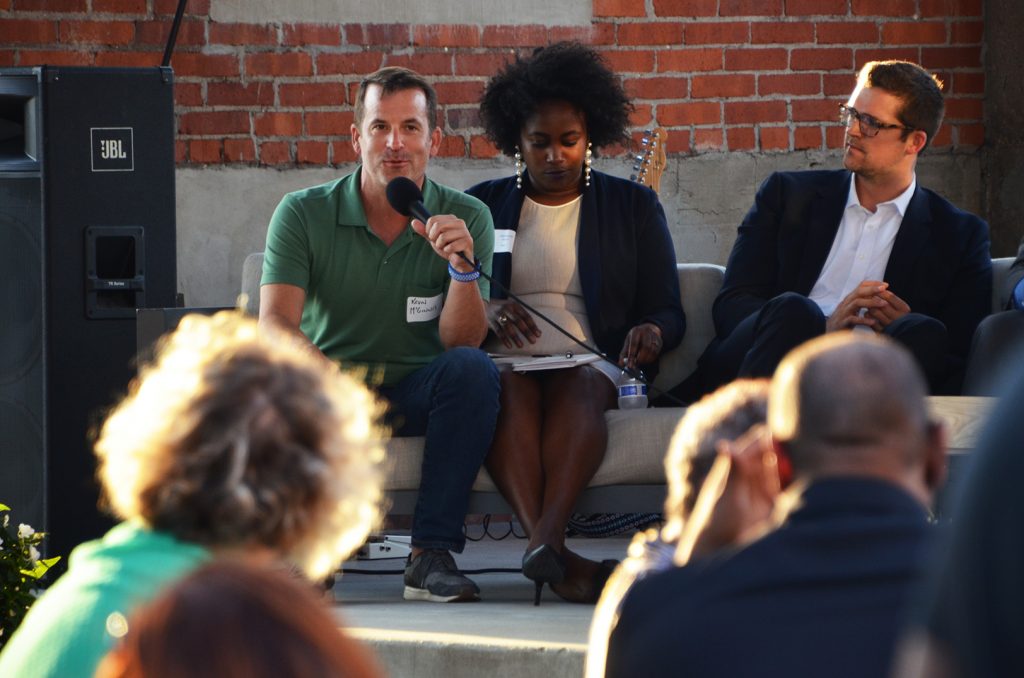
Kevin McGinnis, Keystone Community Corporation, Startland’s Innovation Exchange
Why Keystone? Why now?
Keystone — an independent nonprofit seeking investments from stakeholder groups and corporate partners — is responding to alarms raised by KC Rising, a regional economic development initiative, McGinnis said during a brief presentation about the project.
With Kansas City’s gross domestic product at 6 percent growth since the Great Recession, a catalyst is needed to keep the metro from falling to the wayside among its competitive peers, he said — most of which are “growing at a 12 percent clip.”
“So if we don’t figure out how to change the trajectory of the city from an economic perspective — and on the amount of revenue coming into the city — then we’re going to be on a different list of peer cities in 20 years,” McGinnis said.
A booming innovation district would be the jumpstart needed to move the needle in the right direction, he said.
“This competition among the cities requires infrastructure. It requires tools. It requires systems for us to be successful,” McGinnis said. “So where do we have gaps in Kansas City that we can solve for to try to deal with this GDP crisis that we’re in right now?”
The biggest gaps to be addressed by Keystone: corporate contributions into the innovation economy; lack of an R1 research university; and entrepreneurial density, he said, noting another sizeable chasm — talent.
“In Kansas City, we have a two-sided workforce challenge, in that we have populations that have not been invested in and have not been included in innovation and not been included in entrepreneurship,” McGinnis said. “We can talk all day long about attracting talent to Kansas City or developing talent in Kansas City, but until we address the populations that aren’t prepared for the knowledge economy and that aren’t prepared to contribute to these high-growth opportunities, we’re not going to fix average median household income. We’re not going to fix the number of quality jobs. We’re not going to solve any of those issues [raised by the KC Rising report].”
Click here to read more about Kevin McGinnis and the Keystone project.
High-growth opportunities
Keeping place in mind, McGinnis said, Kansas City must take advantage of the region’s comparative advantages — industry focuses with the highest potential return on investment. Key among them: transportation logistics, smart city/urban tech; and design build, he said.
“With our existing trade sectors, we have an amazing opportunity to be global leaders in these spaces with the architectural firms we have here, the amazing engineering talent we have,” McGinnis said. “It also gives us the ability to create a test lab — a living lab — centered around solving ‘How do we rebuild our neighborhoods in the right way?’”
For Keystone, the focus is on developing a space where “innovation-led entrepreneurship” can thrive, McGinnis said, noting business categorizations detailed within KCSourceLink’s We Create Report.
Startups in such fields as FinTech, AgTech and healthcare — in contrast to micro enterprise (small business owners, freelancers); Main Street businesses; and second-stage companies — have a greater likelihood of impact on the Kansas City region, he said.
“That’s where GDP comes in, and these are research-, science-, and technology-based companies primarily that are high growth and employ lots of people at high wages,” McGinnis said. “We are not creating enough of those companies in Kansas City. So on the entrepreneurial side, how can we create infrastructure to create more of those high-growth entrepreneurial opportunities?”
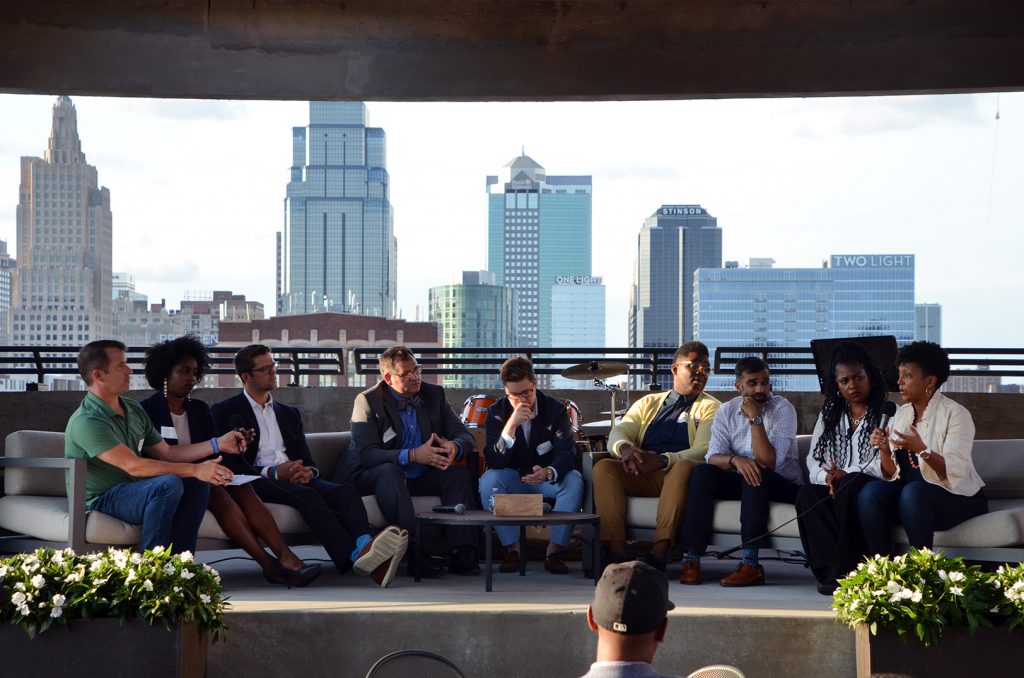
Startland’s Innovation Exchange
Who reaps the rewards?
An approach that favors innovation-led entrepreneurship and high-growth startups can easily leave out members of the surrounding community — and its small business owners — even when developers pledge to involve residents in planning, said Sam Hasty.
“It’s one thing to have a voice. It’s another thing to have power in the process,” said Hasty, managing partner of OHUB. “There’s no shortage of community voice or input, but what real inclusion requires is intentionality behind who has power in the decision-making process.”
OHUB recently arrived in Kansas City from Atlanta with plans to develop its own minority accelerator at 18th and Vine.
Click here to read more about OHUB’s efforts.
“We’ve been wrestling with this issue of access to financial upside,” Hasty said. “So when a new building is being built east of Troost, how are community members given access to the financial returns that come from that building? How can we have equitable access to ownership of these scalable returns that are happening at businesses and developments all across the city?”
Crystal German was pleased to hear Hasty directly reference “ownership” in the context of the innovation discussion, she said. It was one of several words she noticed her fellow panelists avoiding during the conversation, the principal at Prosperity Labs remarked.
“I also haven’t heard anyone say ‘black,’ ‘white,’ ‘Latinx’ or ‘poor.’ I think part of what we need to do is name things as they are,” German said. “So instead of using words like ‘inclusion,’ are we talking about black people? Are we talking about Latinx? Are we talking about Asians? Are we talking about poor? Are we talking about under-skilled? We need to know who we’re actually talking about, so that we do these plans, we know who to have at the table because we know who’s been left out.”
Inclusion efforts rarely give the power Hasty mentioned to the people who have historically been denied it, she added.
“Often inclusion is around employment, not in the ability to participate on the ownership level. That’s where real wealth creation actually happens. That’s the game changer,” German said. “The game changer is not taking somebody and giving them a $12 an hour job — it’s really giving them a stake in a financial return.”
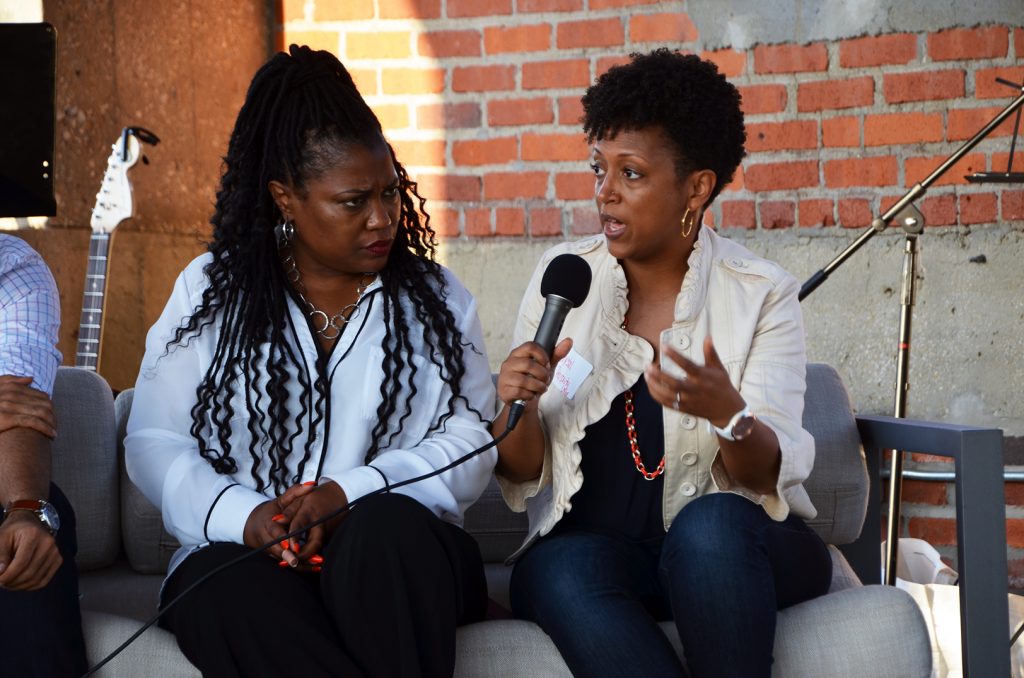
Jamilah Jones, Economic Development Corporation of Kansas City, and Crystal German, Prosperity Labs
Programs like KCUP, an initiative of the Economic Development Corporation of Kansas City that has partnered with OHUB for its minority accelerator, aim to bridge the gap between black and Latinx business owners and the seemingly unattainable status of innovation-led entrepreneurship, said Jamilah Jones.
“We’re trying to solve the racial wealth gap. We need more high-paying jobs,” said Jones, business development officer at the EDCKC. “We also need to find those businesses with the potential to scale.”
It’s these ventures — along with residents — that could be forced to move if developers taking advantage of low-cost real estate begin gentrifying neighborhoods around innovation districts, German said.
“What happens to the surrounding community as that innovation hub becomes so successful that the people who work [within the district] want to live nearby?” she asked.
It’s a key concern for Keystone moving forward, McGinnis said.
“The tough thing about the word ‘gentrification’ is that oftentimes when you’re doing urban revitalization or you’re rebuilding existing communities, that’s the goal,” he said. “It’s the negative consequences — pushing people who are already there out of their own community — that we’re trying to avoid.”
Having visited 14 innovation hubs across the nation in the leadup to his push for Keystone, McGinnis reiterated his stance that the best outcomes come from intentionality in planning and frank conversations like the panel atop WeWork.
“The [innovation community projects] you see that are vibrant — with the outcomes you’d expect in terms of job creation — are those that come out of vibrant, diverse populations, and those that start on community engagement early,” he said.
This story is possible thanks to support from the Ewing Marion Kauffman Foundation, a private, nonpartisan foundation that works together with communities in education and entrepreneurship to create uncommon solutions and empower people to shape their futures and be successful.
For more information, visit www.kauffman.org and connect at www.twitter.com/kauffmanfdn and www.facebook.com/kauffmanfdn




